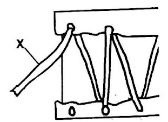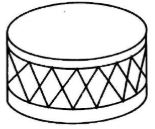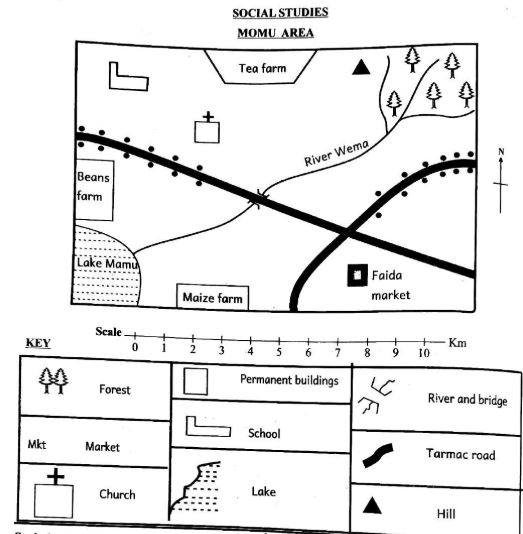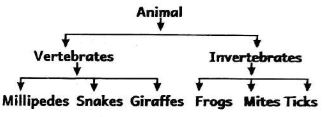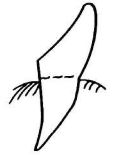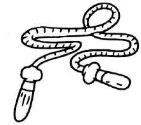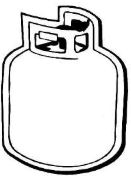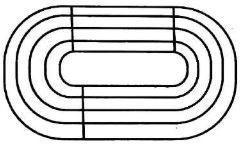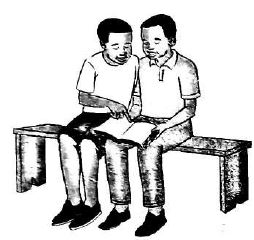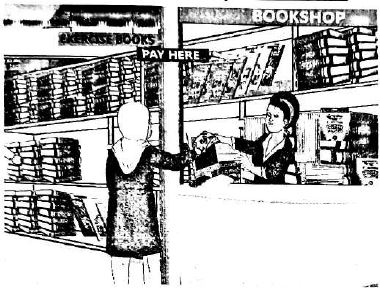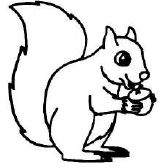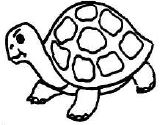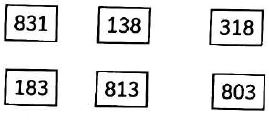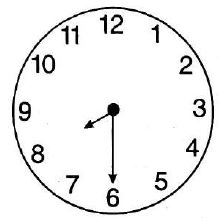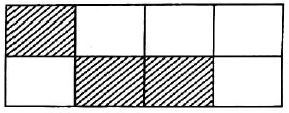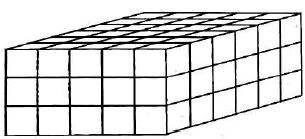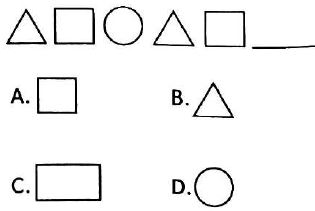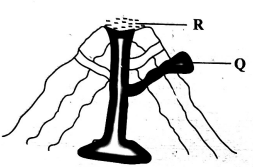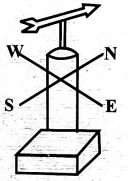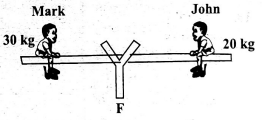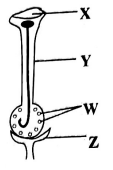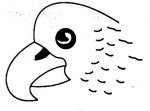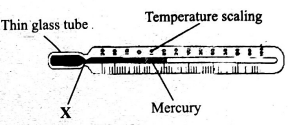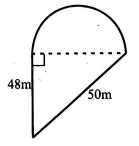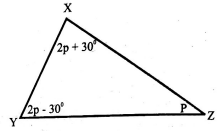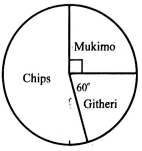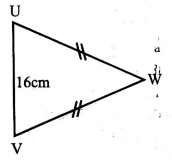Stella
Creative Arts & Social Studies Questions and Answers - Grade 4 End Term 2 Exams 2023 Set 1
ART AND CRAFT
- Grade 4 learners joined pieces of leather as shown below.
What is the name of the strip of leather labelled X?- Coil
- Thong
- Fibre
- Reeds
- Which of these items can be used to scratch waxy surface when creating pictures using crayon etching technique?
- Nail
- Eraser
- Paper
- Ruler
- Grade four learners of Kikuyu Township school modelled a pot using pinch technique. Which of the following is not a technique that the learners could have used to decorate the modelled pot?
- Stamping
- Scratching
- Kneading
- Incising
- The following materials are required when creating tonal variation on a cylindrical form. Which one is not?
- Pencil
- Sharpener
- Rubber
- Wax
- Learners modelled pots of varying sizes and shapes in class. How did they make the walls of the pinch pots to have even thickness?
- Using a stick to smoothen the pinch pot.
- Leaving the pot to dry slowly under a shade.
- Pressing against the walls using the thumb and fingers to widen the hole and shape the pot.
- Making a hole into the lump of clay using the thumb onlY
- Which of the following is a lower case letter?
- k
- t
- m
- g
- The following practices are usually carried by different communities when making baskets. Which one is not?
- Twining
- Plaiting
- Incising
- Sewing
- The following are natural materials that are used in basketry when weaving a circular mat. Which one is not?
- Nylon
- Banana fibre
- Reeds
- Wattle sticks
- Grade 4 learners created different pictorial composition using montage technique. Which locally available natural adhesive did they use to stick cut-out pictures and photographs?
- Glue sticks
- Office glue
- Cellotape
- Blue gum
- The following items are usually made from leather after the tanning process. Which one is not?
- Belts
- Bags
- Shoes
- Cups
- Grade 4 learners of Rungiri primary school were told to name different types of props that can be used in a folk dance. Among the answers given below, which one is not one of them?
- Flywhisk
- Sticks
- Shields
- Floor
- The following are safety measures that should be observed when dancing except one. Which one is it?
- Do not dance on a wet floor.
- Do not dance while wearing loose clothes and sharp costumes.
- Dance while stepping on others.
- Do not crowd together while dancing.
- Learners were taught the importance of cleaning a descant recorder before and after use. Why is it important to clean the instrument?
- To avoid using the descant recorder.
- To sell the descant recorder after use.
- To use the descant recorder many times in a day.
- To prevent the spread of germs and diseases.
- Learners were taught about groups of percussion instruments by their teacher. One of the instrument learnt was a drum shown below. What type of instrument is it?
- Melodic percussion instrument.
- Non-melodic percussion instrument.
- Wind instrument.
- String instrument.
- Re-arrange the following procedure in the correct order from the first step to the last step on how to make a functional shaker shown below.
- Flatten the bottle tops.
- Remove the inside soft part of the bottle tops.
- Make a hole in the middle of each bottle top.
- Put the bottle tops in a string or wire.
- Perform a song as you play the shaker.
- Tie the string or wire with the bottle tops to a Y-shaped stick.
- (ii), (i), (iv), (iii), (vi), (v)
- (ii), (i), (vi), (iii), (iv), (v)
- (ii), (i), (iii), (iv), (vi), (v)
- (i), (ii), (iii), (iv), (vi), (v)
- The following are values that we learn from folk songs. Which one is not?
- Kindness
- Unity
- Disobedience
- Peace
- Natalie named elements of dance. Which one was not correct?
- Resting
- Space
- Energy
- Time
- How do we call songs that are sung by people of a particular area or community to mark an occasion?
- Folk songs
- Sacred songs
- Topical songs
- Patriotic songs
- Samson wants to tune a drum. He can tune it by
- hitting it hard.
- warming the membrane.
- Couring cold water on it.
- sitting on it.
- The following are activities we can engage in when singing action songs. Which one is not?
- Sweeping
- Washing hands
- Fighting.
- Weaving mats
Study the map of Momu area and answer questions 21-25.
- Grade four learners were asked to identify the direction of the school from Faida market in Momu area. Which answer was correct?
- South West
- North West
- North East
- South East
- The church in Momu area shows that the people are
- Christians
- Muslims
- Pagans
- Hindus
- Which one of the following physical features is not found in Momu area?
- Hill
- Lake
- River
- Ocean
- Which of these crops is not grown in Momu area?
- Coffee
- Maize
- Tea
- Beans
- People of Momu area buy and sell their goods at the
- School
- Market
- Church
- Lake
- Kenya is divided into how many counties?
- 47
- 10
- 2
- 8
- The following are qualities of a good leader. Which one is not?
- Honest
- Responsible
- Corrupt
- Hardworking
- The sun rises from the
- East
- West
- North
- South
- Grade four Social Studies teacher asked grade four learners to state uses of rivers in their county. Which answer was wrong?
- Provide water for irrigation.
- Some rivers are sources of fish.
- Provide us with water for home use.
- They are homes for domestic animals.
- We all depend on doctors for
- treatment
- food
- education
- transport
- The following is a historical built environment. It is known as a
- museum
- monument
- cultural center
- school
- Identify a way of not caring for the environment?
- Cutting trees
- Planting trees
- Building of gabions
- Fencing forests
- Which one of the following is not a form of child abuse?
- Forcing children to go to school.
- Beating children.
- Denying children food.
- Employing children.
- The buying and selling of goods and services is known as
- farming
- trade
- transport
- communication
- Arrows, shields, horns, beads, spears and clay pots kept in a museum are called
- culture
- traditional artefacts
- monuments
- furniture
C.R.E
- "You created every part of me, you put me together in my mother's womb. (Psalms 139:13). This verse teaches us that
- God created all parts of our bodies.
- God created animals and plants.
- God did not know us before we were born.
- God does not love us the way we are.
- Select the letter which contains good emotion.
- Fear
- Sadness
- Anger
- Love
- In a Sunday School, grade four children told their teacher why they obey their parents as follows:
Martha - They give me food.
Titus - They do not curse me.
Dorcas - They pay my school fees.
Dan - So that I can live long on earth.
Who was correct according to Biblical teaching?- Martha
- Titus
- Dorcas
- Dan
- Ann returned the extra money she was given at a shop to the shopkeeper. Which value does she show?
- Love
- Honesty
- Kindness
- Obedience
- From the story of Samson killing a lion,, we learn to
- fear lions.
- depend on God's power.
- run away from danger.
- always walk in groups.
- We can protect ourselves from sexual abuse by
- walking alone in unsafe places.
- going into lonely rooms with people we do not know.
- not accepting gifts from strangers.
- meeting people of the opposite sex alone.
- God is pure and perfect. He cannot sin or make mistakes. This shows that God is
- Sole creator
- Holy
- Loving
- Kind
- Which group has Old Testament books of the Bible only?
- Luke, Acts, Genesis
- Psalms, Matthew, Jeremiah
- Exodus, Numbers, Nehemiah
- Judges, Romans, Proverbs
- teaching?
- The lesson learners can share with their parents after learning about the story of Zaccheaus is that they should
- climb a tree to see Jesus.
- turn away from bad behaviour.
- always invite people to their homes.
- hate people who do bad things.
- The name Abraham means
- saviour
- laughter
- father of many nations
- rock
- Jesus was called the son of God because
- his mother was a virgin.
- he was born by the power of the Holy Spirit.
- he was the only child of Joseph and Mary.
- he was given the name by the angel of God.
- Out of the ten lepers Jesus healed, only one of them went back to thank Him. A lesson we learn from this miracle is that we should be
- honest
- thankful
- caring
- respectful
- "The kingdom of God starts in a small way and grows to become bigger." This teaching is found in the parable of the
- lost coin
- lost son
- mustard seed
- sower
- One day, Brian was pushed by his friend when playing in the field. As a good Christian, Brian should
- also push his friend.
- go home and pray for his friend.
- forgive his friend.
- report his friend to the teacher.
- Pamela, a grade four learner was given 100 shillings by her mother. She can use her money wisely by
- buying sweets
- sharing the money with friends.
- buying a pen and saving the rest of the money.
- using the money to travel to a very far place.
I.R.E
- Three of the following are other names of Surah Al-Fatiha. Which one is not?
- The opening chapter.
- The third of the Qur'an.
- The mother of the Qur'an.
- The seven repeated verses.
- Which surah must be recited in every swalat?
- Al-Falaq
- Al-Maum
- An-Naas
- Al-Fatiha
- While playing in the school playground, Hanan picked a rubber in the grass. What was the right thing for Hanan to do?
- Keep the rubber for himself.
- Leave the rubber where it was.
- Take it to the class teacher.
- Report to the nearest police station.
- Which of the following books was revealed to Nabii Ibrahim (A.S.)?
- Suhuf
- . Zabur
- Taurat
- Qur'an
- Which one of the following surahs encourages patience among the Muslims?
- Asr
- BMaun
- Fiil
- Fatiha
- The actions and practices of the prophet (S.A.W) are referred to as
- Hadith
- Wajib
- Sunnah
- Mustahab
- Grade four learners of Kwashee primary school were asked to research online on the duties of the angels. Which of the following is not a duty of the angels?
- Bringing revelation.
- Beating those who commit sins.
- Recording our deeds.
- Bringing rainfall.
- Which one of the following is not a pillar of Iman? Belief in
- prophets
- angels
- day of judgement
- zakat
- Hashim, a grade four learner heard his friend saying. "Maashallah." What do you think Hashim's friend had seen?
- Something good.
- Something bad.
- A dangerous animal.
- A very old woman.
- All prophets of Allah were 'Masumeen.' This means that they were
- patient
- obedient
- sinless
- trustworthy
- Mama Hawa was seen sprinkling water on her clothes. Which type of Najasaat is likely to have gone to her dress?
- Medium
- Light
- Thick
- Heavy
- The angels of Allah were created from
- water
- dust
- fire
- light
- Which direction do Muslims face while performing prayers?
- North
- East
- South
- West
- Who among the following was the first man to be created?
- Ibrahim
- Adam
- Muhammad
- Nuh
- Choose the prayer that is correctly matched with its time.
- Dhuhr - 5.30a.m.
- Asr - 1 o'clock
- Subh - 5.30a.m.
- Isha - 6.30p.m.
MARKING SCHEME
ART
- B
- A
- C
- D
- C
- D
- C
- A
- D
- D
MUSIC
- D
- C
- D
- B
- C
- C
- A
- A
- B
- C
SOCIAL
- B
- A
- D
- A
- B
- A
- C
- A
- D
- A
- B
- A
- A
- B
- B
C.R.E
- A
- D
- D
- B
- B
- C
- B
- C
- B
- C
- B
- B
- C
- C
- C
I.R.E
- B
- D
- C
- A
- A
- C
- B
- D
- A
- C
- B
- D
- A
- B
- C
Integrated Science Questions and Answers - Grade 4 End Term 2 Exams 2023 Set 1
SCIENCE AND TECHNOLOGY (15marks)
- A bell was rung and pupils who were in different places in school compound responded by running back to class. Which of the following is the reason why they were able to hear the bell sound?
- Sound travels only in one direction.
- Sound travels in all directions.
- The pupils are used to the bell sound.
- The sound of the bell was loud.
- Grade four learners were discussing about the effects of force. Which among the following is not the effect of force in our day to day activities?
- Can change the shape of an object.
- Can make a stationary object to move.
- Can change the direction of a moving object.
- Can change mass of an object.
- Three of the following are ways through which one can make a floating object to sink in water. Which one of the following cannot?
- Changing shape of the object,
- Increasing its size.
- Adding sinkers to the floaters.
- Adding more loads to the floaters.
- The flow chart below was used by a grade four teacher in classifying animals.
Which two animals were wrongly classified?- Millipedes and frogs.
- Snakes and ticks.
- Giraffes and ticks.
- Snakes and mites.
- Three of the following are parts of the human digestive system. Which one is not?
- Mouth
- Trachea
- Rectum
- Stomach
- Grade four learners were asked to state different functions of different parts of the human digestive system. In which one of the following parts is water absorbed from undigested food materials?
- Oesophagus
- Rectum
- Large intestine
- Small intestine
- During a Science and Technology lesson, grade four learners were discussing about water pollutants. The teacher asked learners to state the pollutants. Who among the following learners gave a wrong response?
- Nadia - Waste from industries.
- Loise - Oxygen from plants.
- Edwin - Animal waste.
- Geoffrey - Soil
- Learners from Makongeni primary school went for an educational trip to a neighbouring county. Which among the following digital devices is the most suitable for the learners to take pictures and also to record?
- Phones
- Desk top computers
- Radio
- Watches
- Grade four learners were provided with water and containers of different shapes to use in an experiment as the one shown below.
If the containers can hold the same amount of water, what characteristic were the learners most likely to be investigating?- Liquids have mass.
- Liquids have volume.
- Liquids occupy space.
- Liquids take shape of the containers.
- The diagram below represents a type of human tooth. What is the function of the tooth?
- Cutting and biting
- Holding food
- Biting and chewing
- Chewing and grinding
- When discussing about the characteristics of plants as living things, grade four learners were able to discover that plants take in nutrients. From this discovery it shows that plants
- breathe
- move
- feed
- reproduce
- The following are parts of a desktop computer. Which among the following parts is used to point items on the monitor when typing?
- Central Processing Unit
- Cables
- Keyboard
- Mouse
- The following are characteristics of a certain state of matter.
- Have definite mass.
- Have definite volume
- Indefinite shape.
Which among the following pairs have the characteristics above?- Juice, water
- Ink, dust
- Rubber, stone
- Air, smoke
- Letters A to Z are represented by numbers 1 to 26. Which of the following will be used to represent the word FEED in coding?
- 1234
- 6554
- 6545
- 4556
- Grade four learners were to participate in clean up activities in their school compound which has a lot of stagnant water. Which among the following is the protective gear they all need to protect their hands?
- Apron
- Gloves
- Dust coat
- Face mask
AGRICULTURE (10 MARKS)
- Thinning is a practice for care of fruit tree seedlings. Which among the following statements best explains what thinning is?
- Uprooting excess seedlings.
- Removing any unwanted plant.
- Applying dry plants on nursery bed.
- Making shade over nursery bed.Grade four learners were provided with water and containers of different shapes to use in an experiment as the one shown below.
If the containers can hold the same amount of water, what characteristic were the learners most likely to be investigating?
A. Liquids have mass.
B. Liquids have volume.
C. Liquids occupy space.
D. Liquids take shape of the containers.
- Which among the following methods of irrigation best conserves water in the farm?
- Use of buckets.
- Use of sprinklers.
- Use of watering can.
- Use of drip irrigation.
- Grade four learners were discussing about different uses of different types of soil. Which among the following learners gave the correct use of clay soil?
- Ashley - Growing maize.
- Makena - Growing rice.
- Mark - Growing groundnuts.
- Adam - Making container gardens.
- When discussing on how to make compost manure, grade four learners were discussing about the materials used. Which among the following cannot be used in making compost manure?
- Garden soil
- Animal waste
- Ash
- Polythene papers
- The following are procedures taken when transplanting fruit seedlings. Which among the procedures will come last?
- Watering the seedling.
- Pressing soil around the seedling.
- Placing the seedling in the middle of the hole.
- Mixing soil with compost manure.
- Small wild animals can cause a lot of damages in the farm. Which among the following small animals will cause damage to the farmer by eating the chicken eggs?
- Moles
- Mongoose
- Squirrels
- Monkeys
- Animals kept at home have different importance. Which among the following animals gives mutton as its product?
- Cattle
- Pig
- Camel
- Goat
- Grade four learners were doing an agriculture experiment. They were asked to carry to class different types of soil. According to the soil brought, which has the largest particles?
- Silt soil
- Clay soil
- Loam soil
- Sand soil
- After discussing about domestic animals, grade four learners were asked to state different functions of animals. Which among the following animals will help the farmers in transporting heavy loads to the market?
- Horse
- Donkey
- Sheep
- Dog
- Three of the following are uses of water in the farm. Which one is not the use of water in the farm?
- Watering animals
- Watering plants.
- Cleaning farm equipment.
- Cooking.
HOME SCIENCE (10 marks)
- Grade 4 learners were discussing the importance of preparing a shopping list. They gave the answers below. Which one was wrong?
- It reduces wastage
- It saves time.
- It wastes money.
- One is able to have the money needed.
- Choose the one that is not a fuel used at home.
- Charcoal
- Firewood
- Gas
- Diesel
- Natasha was cleaning her leather shoes one evening. Which one of the following is a safety measure that she was supposed to observe
- Leave the floor dry.
- Leave the polish open.
- Play while cleaning the shoes.
- Use a sharp stick.
- Which of the following cleaning materials is wrongly matched with its use?
- Cloth - Dusting
- Duster - Cleaning
- Dustbin - Collecting waste
- Mop - Sweeping
- Name the game that is played using the play item below.
- Football
- Tug of war
- Hide and seek
- Volleyball
- Jane went to a supermarket to buy yoghurt. She found two tins of the same size displayed as shown.
Jane bought yoghurt A. Which factor did she consider?- Expiry date
- Cost
- Neatness
- Freshness
- Which one of the following is an energy giving food?
- Chicken
- Mangoes
- Maize
- Cabbage
- Which one is not a source of milk in our locality?
- Dairy
- Milk packets in shops
- Plants
- Milk vendors
- Job bought a mango from the market and ate it immediately without washing it. Job could suffer from all the following illnesses except?
- vomiting
- stomachache
- sore throat
- diarrhoea
- Name the fuel that is used in the equipment shown in the picture below.
- Gas
- Paraffin
- Charcoal
- Electricity
PHYSICAL AND HEALTH EDUCATION (15 marks)
- The diagram below shows an athletics track. Which race is not done on the track?
- Three of the following are done at the command "on your marks" during standing start except one. Which one?
- Drive your arms and legs forward.
- Place one foot forward pointing directly ahead.
- Place your other foot backward.
- Look at the ground ahead.
- The following are steps followed when improvising a soccer ball.
- When you are okey with the size tie the ball with a strong string.
- Cover the ball with a piece of material.
- Keep adding and wrapping the material until you are okay with the size.
- Put the required materials together.
- Collect the required materials.
- Neatly tie the handles of the bag.
- Ensure the ball is as round as possible.
What is the correct order of the steps?- (iv), (v), (ii), (vi), (iii), (i), (vii)
- (iv), (v), (ii), (iii), (vi), (vii), (i)
- (v), (ii), (iv), (iii), (vi), (vii), (i)
- (v), (iv), (iii), (ii), (vi), (vii), (i)
- is moving the ball to a teammate, in order to keep it away from opponents and putting the ball into a position for a shot on goal.
- Passing
- Tapping
- Shooting
- Catching
- The following will lead to a batsman to be declared 'batsman out' except one. Which one?
- Overtaking another batsman.
- Obstructing the fielders.
- Running outside a post.
- The ball is caught when the batsman hits it.
- The position in which someone holds their body when standing or performing a skill is called
- stance
- technique
- drill
- posture
- Which one of the following lifestyle diseases can be prevented by skipping a rope?
- Malaria
- Diabetes
- Obesity
- T.B.
- Kylina a grade 4 pupil from Mawingu Academy was performing a certain gymnastic skill as shown below. Which skill was he performing?
- Headstand
- Backward roll
- Handstand
- Forward roll
- What shape is formed by the hands and the top of the head when performing a headstand balance?
- Triangle
- Rectangle
- Square
- Circle
- Kienjeku, a pupil from Mavumbini primary school performed a certain gymnastic skill that involved a combination of four different skills. What do we call it?
- Four action sequence.
- Three action sequence.
- Two action sequence.
- One action sequence.
- Identify the type of swimming stroke shown below.
- Backstroke
- Breaststroke
- Sidestroke
- Front crawl
- Mr. Kilinda from Makongeni primary school asked pupils to state safety rules when swimming. Which among them gave an incorrect answer?Daudi : Swimming in proper costume.
Amina : Do not dive in the deep end of the pool.
Kata: Do not swim. immediately after taking meals.
Juma: Ensure there is a life saver on alert- Kata
- Juma
- Daudi
- Amina
- Which game is played with the equipment drawn below?
- Rounders
- Frist.ee
- Softball
- Dodge ball
- The field of play in a frisbee game is divided into how many courts?
- 4
- 5
- 3
- 2
- Which item below is not found in a first aid box?
- Cotton wool
- Nail
- Scissors
- Bandage
MARKING SCHEME
SCIENCE
- B
- D
- B
- A
- B
- C
- B
- A
- D
- B
- C
- D
- A
- B
- B
AGRI
- A
- D
- B
- D
- A
- B
- D
- D
- B
- D
H/SCI
- C
- D
- A
- D
- B
- B
- C
- C
- C
- A
PHE
- D
- A
- B
- A
- C
- D
- C
- A
- A
- A
- C
- D
- A
- C
- B
Shughuli za Kiswahili Questions and Answers - Grade 4 End Term 2 Exams 2023 Set 1
KUSIKILIZA NA KUZUNGUMZA
Soma mazungumzo yafuatayo kisha ujibu maswali.
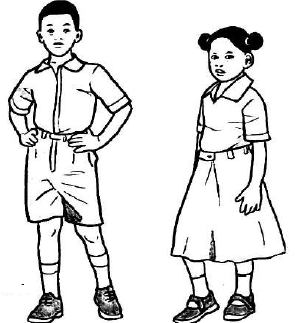
Neema : Salaam aleikum sahibu yangu.
Juhudi : (Kwa furaha) Aleikum salaam msena wangu. Wambaje ?
Neema : Sina la kuamba.
Juhudi : Mimi pia sina neno. Ninakuomba twende nyumbani kwetu kwa matembezi..
Neema : Nashukuru kwa makaribisho. Ningetaka kwanza niwapigie wazazi wangu simu niombe ruhusa. (Anapiga simu)
Juhudi : (Akimtazama kwa makini) Je, wamekupatia idhini?
Neema : (Kwa tabasamu) Naam! Lakini baba ameniambia ikifika saa kumi na moja jioni niwe nimerudi nyumbani.
(Wote wanatembea pamoja)
Juhudi : (Akifungua mlango) Karibu nyumbani kwetu.
Neema : Starehe! Sebule yenu inavutia sana.
Juhudi : Namshukuru Mungu kwa kutubariki na fanicha kama vile: Makochi, meza, viti na kabati.
Neema : Matendegu ya samani zenu ni ya kipekee.
Juhudi : Seremala aliyeyatengeneza ni hodari. Pia alitengeneza fremu ya mlango wetu.
Neema : (Akiangalia huku na kule) Pia ninaona televisheni, mazulia, mapazia na vitu vingine vingi.
Juhudi : Kila siku mimi hupendezwa na vitu hivi vyote.
Neema : Kusema kweli nyumba yenu inapendeza.Pia ninaona balbu zenu na picha zilizo ukutani ni za kupendeza.
Juhudi : Ninaomba Mungu awawezeshe kupata vitu kama hivi.
Neema : Inshallah!
(mazungumzo yanakatika wazazi wa Juhudi wanapoingia)
- Mazungumzo kati ya Juhudi na Neema yalianza kwa
- kuagana
- kujuliana hali
- kuomba ruhusa
- matembezi
- Kulingana na mazungumzo haya neno sahibu ni sawa na:
- Laazizi
- Msena
- Ndugu
- Jirani
- Kulingana na mazungumzo uliyoyasoma ni fanicha gani haipatikani katika sebule ya akina Juhudi?
- Makochi
- Meza
- Rafu
- Kabati.
- Neema anawaheshimu wazazi wake kwa sababu?
- Ana rafiki mzuri.
- Alimtembelea Juhudi.
- Aliomba ruhusa kabla hajaenda kumtembelea Juhudi.
- Anamsalimia rafiki yake kwa heshima.
- Ni nini kilichofanya mazungumzo hayo kuisha?
- Wakati wa kurudi nyumbani ulipofika.
- Wazazi wa Juhudi kufika nyumbani.
- Giza kuingia.
- Walichoka kuongea.
Swali la 6 hadi la 9
Soma kifungu kifuatacho kisha ujibu maswali.
Tedi na Njeru walisomea shule ya Baraka. Waliishi katika kijiji cha Mamboleo. Ilikuwa kawaida yao kukutana mara kwa mara ili kusoma pamoja. Jumamosi iliyopita walikutana nyumbani kwa kina Tedi. Walikuwa wamepewa kazi ya kuchora bendera ya Kenya kwenye chati. Pia walifaa kupaka bendera hiyo rangi zake.
Tedi alikuwa amefundishwa kuhusu bendera ya Kenya na kaka yake. Kaka yake anaitwa Rashid. Tedi alichukua chati nyeupe na penseli za kuchorea. Alimwelekeza Njeru jinsi ya kuchora bendera ya Kenya. Walichora bendera vizuri na kuipaka rangi. Rashid alifika akaiona bendera waliyochora. Alifurahi na kuwapongeza. 'Je, rangi za bendera yetu zinaonyesha nini ?" Njeru alimwuliza Rashid.
Rashid aliwaeleza maana ya kila rangi. Alisema kuwa rangi nyeusi inaonyesha rangi ya ngozi yetu. Nyeupe nayo inaonyesha amani na uaminifu. Tedi na Njeru waliendelea kusikiliza kwa makini. Rashid aliendelea kuwaeleza kuwa rangi nyekundu inasimamia damu iliyomwagika wakati wa vita vya kutafuta uhuru. Nayo rangi ya kijani inaonyesha ardhi. Tedi na Njeru walifurahi. Walimshukuru Rashid kwa kuwaelimisha.
- Tedi na Njeru waliishi wapi?
- Kijiji cha Mamboleo
- Shule ya Baraka
- Nyumbani kwao
- Shuleni
- Tedi anamjali Njeru. Toa sababu.
- Alimtembelea
- Walisoma pamoja
- Alikuwa rafiki yake
- Alimsaidia kuchora bendera ya Kenya
- Ni watu wangapi waliotajwa katika kifungu hiki?
- Wawili
- Watatu
- Wannne
- Mmoja
- Kukutana mara kwa mara inamaanisha nini
- Kukutana mara nyingi
- Kukutana baada ya muda mrefu
- Kukutana mara moja
- Kukutana bila kutarajia
Swali la 10 hadi la 12
Soma kifungu kifuatacho kisha ujibu maswali.
Karibu wangu mwandani, twende sote ziarani,
Tutazunguka shambani, kuna matunda mitini,
Nina mimea bondeni, na miche kando mtoni,
Karibu kwangu shambani, twende sote ziarani.
Michungwa ni tele kwangu, tena yote imezaa,
Miembe ninayo kwangu, maembe yaning'inia,
Minanasi mingi kwangu, nanasi zimezagaa,
Karibu kwangu shambani, twende sote ziarani.
Minazi ni ile kule, ina nazi na madafu,
Mipera ni ile pale, inazaa maradufu,
Mianzi nayo ni ile, kimo chake ni kirefu,
Karibu kwangu shambani, twende sote ziarani.
Ziara tumemaliza, miche ninakupa shika,
Naomba kama waweza, panda kwako ukifika,
Maswali nayo uliza, upate kufaidika,
Karibu kwangu shambani, twende sote ziarani.
- Msimulizi anamwalika mwandani wake waende wapi?
- Safari ya shambani
- Sherehe ya shambani
- Kazi ya shambani
- likizo shambani
- Kwa nini miche ilipandwa kando ya mto?
- Ili isipate magugu
- Ili isiharibiwe na wadudu
- Ili ipate maji
- Ili ipate kivuli
- Jina lingine la shambani ni gani?
- Mtoni
- Ziarani
- Kondeni
- Safarini
Swali la 13 hadi la 15.
Soma kifungu kifuatacho kisha ujibu maswali.
Shangazi Naomi hututembelea kwetu kila likizo. Likizo iliyopita, nasi tuliruhusiwa kwenda kumtembelea. Tulimpelekea sukari, unga na matunda. Shangazi alifurahi sana. Mimi na kakangu pia tulifurahi kumwona.
Shangazi alituandalia chakula kilichonukia kama ruhani. Alitukaribisha mezani. Kila mmoja aliketi umbali wa mita moja na nusu kutoka kwa mwenzake.Tulizingatia maagizo ya Wizara ya Afya. Kaka aliombea chakula kisha tukanawa mikono. Kila mmoja alijipakulia chakula kiasi cha kumtosha.
Shangazi alitupongeza kwa kuzingatia adabu mezani. Alitupongeza tulivyokula kwa heshima. Aidha, alisema tumelelewa vizuri. Hakuna aliyebakisha chakula kwenye sahani. Shangazi alitushukuru nasi tukamuahidi kumtembelea tena.
- Shangazi Naomi alipelekewa bidhaa zifuatazo isipokuwa
- Ugali
- Unga
- Sukari
- Matunda
- Katika kifungu hiki ni nini kinachoonyesha kuwa wahusika wanajali afya zao?
- Kuombea chakula
- Kuketi umbali wa mita moja na nusu kutoka kwa mwingine
- Kujipakulia chakula cha kutosha
- Kula chakula cha kutosha
- Shangazi aliwapongeza wapwa wake kwa sababu ya
- Kula chakula na kumaliza
- Kulelewa vizuri
- Kumtembelea
- Kuzingatia adabu mezani
Soma kifungu kifuatacho. Kina nafasi 16 hadi 20. Umepewa majibu manne hapo. Chagua jibu lifaalo zaidi kati ya yale uliyopewa.
Je, ___16___unajua mavazi mbalimbali? Kuna mavazi ya wanaume na ya___17__. Nguo___18___ jinsia ya kike pekee ni kama vile__19__na shimizi. Mavazi__20___ faida nyingi kwa watu.
| A | B | C | D | |
| 16 | sisi | wewe | nyinyi | mimi |
| 17 | wanawake | wasichana | wavulana | wazee |
| 18 | wa | la | za | ya |
| 19 | kaptura | mashati | suruali | marinda |
| 20 | zina | ina | yana | una |
Kutoka swali la 21 hadi la 30, chagua jibu sahihi.
- Ni neno gani limeambatanishwa vizuri na aina yake?
- Mrefu- Nomino
- Gilasi -Kitenzi
- Kimbia- Kielezi
- Vizuri- Kivumishi
- Jaza nafasi kwa jibu sahihi. Yai ____ meliwa na mtoto.
- li
- i
- u
- a
- Andika sentensi hii katika hali ya umoja. Wapishi wamepika vyakula.
- Mpishi amepika chakula
- Wapishi wamepika vyakula
- Wapishi wamepika chakula
- Wapishi amepika vyakula
- Ni kundi gani lina mpangilio mzuri wa maneno kama yatakavyofuatana katika kamusi?
- Kula, pakua, pika, nawa
- Salamu, salama, salimu, sala
- Kinu, kisu, mwiko, mchi
- Zulia,tumbuu, pazia, fremu
- Pita aliukata mti huo. Katika kukanusha tunasema, Pita_____
- hataukata mti huo
- hakuukata mti huo
- hajaukata mti huo
- hakati mti huo
- Jaza nafasi kwa jibu sahihi. Wachezaji watapewa zawadi
- sasa
- jana
- kila siku
- kesho
- Chagua kiunganishi katika sentensi ifuatayo: Nitaosha matunda ili nimpe mama;
- matunda
- ili
- mama
- nitaosha
- Jaza pengo kwa jibu sahihi. Mimi nina mpira wangu. Yeye ana mpira
- yake
- wake
- lake
- chake
- Kisan ana mazoea ya kufanya mambo upesi. Mara nyingi anakosea. Je, Kisao anaweza kuambiwa methali gani ili awe makini?
- Haraka haraka haina baraka.
- Mtoto umleavyo ndivyo akuavyo.
- Mtaka cha mvunguni sharti ainame.
- Asiyesikia la mkuu huvunjika guu. kipindi cha mwisho.
- Chagua jibu sahihi. Wanafunzi walifagia darasa ______ kipoindi cha mwisho.
- kati ya
- baada ya
- ndani ya
- juu ya
INSHA
Andika insha kuhusu mada ifuatayo:
SHULE YETU
English Questions and Answers - Grade 4 End Term 2 Exams 2023 Set 1
Read the following dialogue and answer questions 1-5.
Shopkeeper: : You are welcome. How can I help you?
Customer : Thank you. I am looking for a flexible ruler and a sharpener. Do you have them?
Shopkeeper : Yes. Here we have flexible rulers and sharpeners of many different colours. Feel free to choose your colour.
Customer : My favourite colour is blue. But how much do they cost?
Shopkeeper : They are not expensive. Seventy-five shillings only. But it's worth the money. They are of very good quality.
Customer : Okey. Let me have them. Here is the money.
Shopkeeper : Thank you for buying from us.
Customer : You are most welcome. I enjoyed your services.
- The polite words used by the seller from the dialogue were
- how can I help you?
- feel free to choose your colour.
- you are welcome.
- thank you.
- What was the customer looking for in the shop?
- Books and pencils.
- A rubber and a ruler.
- A new school uniform.
- A ruler and a sharpener
- How much did the items bought by the customer cost?
- Seventy shillings
- Fifty shillings
- Seventy-five shillings
- Fifty-seven shillings
- Which colour did the customer decide to buy?
- Blue
- Yellow
- Red
- Green
- From the dialogue, we can tell that the customer was
- disappointed
- satisfied
- annoyed
- confused
Read the passage below and use it to answer questions 6 to 9.
That Saturday afternoon the sun was very hot. Mufasa and his friend Mboya decided to go down the valley to have a swim in river Tiribo. Mufasa was much more experienced swimmer than Mboya. He did not think twice but took off his clothes and dived into the cool water.
Mboya followed later when Mufasa insisted. "Don't be a coward, Mboya, the river is not deep and the water is super cool," Mufasa said while splashing in the water happily.
They were busy swimming when Mufasa noticed something that looked like a moving stone. The boys quickly realized that it was a crocodile. They hurriedly got out of the water and dressed up. They were lucky to have narrowly escaped the jaws of the dangerous animal.
- Mufasa and Mboya went down to river Tiribo because
- the river was shallow.
- the afternoon weather was hot
- the valley was near and safe.
- the two boys were very good swimmers.
- Why did Mufasa not think twice but took off his clothes and jumped into the water?
- He was braver then Mboya.
- He was feeling hotter than Mboya.
- He was an experienced swimmer.
- He was older than Mboya.
- According to Mufasa,
- river Tiribo was not shallow.
- his friend, Mboya was brave.
- the water was quite warm.
- Mboya did not have courage.
- How did the two boys escape death?
- They saw a moving stone and ran away.
- They realized a crocodile about to attack.
- They jumped out of the crocodile's jaws.
- They swam towards the moving stone.
Read the passage below and use it to answer questions 10 to 12.
Teeth are very important part of our body. They need to be taken care of well because they help us chew our food. Remember we cannot live without food. We must take good care of our teeth by avoiding eating too many sugary things such as sweets and biscuits. Very hard food such as nuts must be avoided because they can injure our teeth.
Brushing our teeth at least twice a day is very important too. Dentists advise brushing of our teeth in the morning and before going to bed. This helps a lot in preventing decay and bad breath. All we need is a good toothbrush and to rinse our mouth after eating anything. It is also good to visit the dentist at least once a year for a complete dental check-up.
- How are the teeth useful to us?
- They are part of our body.
- They help us chew our food.
- They help us to live.
- They help us crush hard food.
- To prevent teeth decay and bad breath, we are advised by dentists to
- brush our teeth before going to bed only.
- brush our teeth in the morning only.
- brush our teeth two or more times a day.
- avoid sugary things that can injure our teeth.
- What is not important part of taking care of your teeth?
- Going for dental check-up once a year.
- Rinsing our mouth after eating.
- Brushing our teeth using a good brush.
- Visiting the dentist once a month.
Read the passage below and use it to answer questions 13 to 15.
Long ago, animals and human beings had no difference. They did not only talk but also cultivated crops. The tortoise was known for his skills in growing the best tomatoes. His tomatoes were so many that he could feed both animals and human beings. This made him wealthy and much respected.
The squirrel, however, was lazy and cunning. He would visit tortoise's farm in the middle of the night and harvest some tomatoes. This disturbed the tortoise so much that he decided to lay a trap.
As usual, the squirrel sneaked into the tomatoes farm carrying a huge basket. Little did he know that his days were numbered. Snap! Squirrel stepped on the trap. His front legs were caught and he helplessly hanged the air. Early in the morning, the owner of the farm found the thief.
He was given a hard beating and forced to dig a whole acre to pay for his behaviour.
- Tortoise was able to grow many tomatoes because
- he was different from human beings.
- he was skilled in growing tomatoes.
- he was rich and much respected.
- he was known by both animals and human beings.
- Why do you think squirrel's days were numbered?
- He was lazy and cunning.
- He used to steal in the middle of the night.
- Tortoise had already set a trap to catch him.
- He was carrying a very huge basket.
- The punishment given to the squirrel did not include
- digging the tortoise's land.
- receiving a hard beating.
- getting caught by the trap until morning.
- filling his huge basket with tomatoes.
Read the passage below keenly. It contains blank spaces numbered 16 to 20. Fill in the spaces using the best alternative from the choices given.
A man who was selling __16___ decided to rest under a huge tree. He was so tired that he __17___ asleep immediately. On that tree, there were dozens of monkeys. They climbed down and __18___ all the items the man had. When he woke up, he got angry __19___ confused. He took off his cap and angrily threw it down. All the monkeys did the same. What a ___20___ man!
| A | B | C | D | |
| 16 | hurts | hearts | hats | huts |
| 17 | fallen | felll | fall | felt |
| 18 | stole | stealing | stolen | steal |
| 19 | or | from | but | and |
| 20 | foolish | clever | funny | confused |
For questions 21 to 25, fill in the blank spaces with the correct alternative from the choices given.
- The compound will be swept by you and ______
- I
- myself
- mine
- me
- My grandmother is feeling _____ today than yesterday.
- well
- better
- good
- best
- How ______ sugar do you need?
- many
- little
- much
- few
- The carpenter made a _____ wooden stool.
- big, round
- bigger, rounder
- rounder, bigger
- round, big
- Let _____ go out to play.
- they
- them
- themselves
- their
For questions 26 to 30, complete each sentence correctly.
- She could not see _____ in the dark.
- clear
- clearer
- clearly
- clearest
- He ran the _____ and won the race.
- fastest
- faster
- fast
- quick
- Our class prefect is _____ honest boy.
- the
- a
- an
- some
- Will you take coffee ____ tea for breakfast?
- and
- or
- than
- but
- Hellen _____ not hear. She is totally deaf.
- may
- must
- will
- can
COMPOSITION
Write an interesting composition about:
HOW I HELPED AN OLD LADY
MARKING SCHEME
- C
- D
- C
- A
- B
- B
- C
- D
- B
- B
- C
- D
- B
- C
- D
- C
- B
- A
- D
- B
- D
- B
- C
- A
- B
- C
- A
- C
- B
- D
Mathematics Questions and Answers - Grade 4 End Term 2 Exams 2023 Set 1
- In a farm, a farmer has eight thousand six hundred and sixty goats. What is the number of the goats in symbols?
- 8606
- 8666
- 8660
- 80606
- A tank contains 46291 litres of water. What is the total value of digit 6 in the amount of water in the tank?
- 600
- 60
- 60000
- 6000
- In a social hall, there are 2086 tables and 8466 benches. How many tables and benches are there in the hall altogether?
- 10542
- 11552
- 10442
- 10552
- Arrange the numbers in the cards below from the smallest to the largest.
- 138, 183, 318, 803, 813, 831
- 138, 318, 803, 183, 813, 831
- 831, 138, 318, 803, 183, 813
- 831, 813, 803, 318, 183, 138
- Which are the multiples of 8 between 48 and 80?
- 52, 64, 72
- 54, 64, 72
- 56, 64, 72
- 56, 68, 72
- A piece of cake was cut into eight equal parts. Kiprop took one of the parts. Identify the denominator of the fraction taken by Kiprop?
- 8
- 1
- 2
- 4
- During a wedding ceremony, there were 961 adults. What was the number of children if the total number of people in the wedding was 1753
- 970
- 792
- 960
- 950
- The ages of some learners in a certain school are: 6 yrs, 8 yrs, 9 yrs, 11 yrs, 12 yrs, 7 yrs. Which ages are odd numbers?
- 9 yrs, 11 yrs, 7 yrs
- 9 yrs, 12 yrs, 7 yrs
- 6 yrs, 8 yrs, 12 yrs
- 8 yrs, 12 yrs, 7 yrs
- What is the place value of digit 5 in the number 896.53?
- Tens
- Tenths
- Hundreths
- Ones
- Work out:
weeks days
12 5
– 8 6
______________- 4 weeks 6 days
- 3 weeks 9 days
- 4 weeks 9 days
- 3 weeks 6 days
- Arrange these numbers 2.8, 2.6,3.4, 4.2, 2.0 in ascending order.
- 2.0, 2.6, 2.8, 3.4, 4.2
- 2.6, 2.0, 3.4, 2.8, 4.2
- 4.2, 3.4, 2.8, 2.6, 2.0
- 2.0, 2.6, 3.4, 4.2, 2.8
- Convert 32/5 to an improper fraction
- 6/5
- 5/17
- 17/5
- 15/5
- Work out the following:
Hours Minutes
20 45
+13 20
__________________- 33hrs 65min
- 33hrs 5min
- 17hrs 25min
- 34hrs 5min
- Identify the missing numbers in the pattern below.
57, 55, 53,____ ,____ 47- 54, 56
- 51, 49
- 51, 48
- 56, 46
- In a political meeting there were 8701 people. If 5642 were males, how many females were there?
- 3059
- 15343
- 3159
- 3141
- What is the time, shown on the clock face below?
- 6 minutes past 8
- 30 minutes past 7
- 8 minutes to 6
- Half past 8
- Joan has 3268 tomatoes. Emmanuel has 1596 tomatoes. How many tomatoes do they have altogether?
- 4874
- 4784
- 4864
- 4854
- How many days are there in the months of July, August and October?
- 92
- 93
- 90
- 91
- Malcom had seven notes of shs. 100 and two notes of shs. 50. How much money did he have in total?
- shs. 150
- shs. 700
- shs. 800
- shs. 750
- Alex has 8 textbooks. What is the number of textbooks in Roman Numerals?
- IX
- X
- IV
- VIII
- What is the fraction of the unshaded part in the figure below?
- 3/8
- 3/5
- 4/8
- 5/8
- Alice worked out the sum below. Which correct answer did she get?
4259
+ 3815
- 8174
- 8074
- 8064
- 8704
- Work out:
m cm
25 86
– 4 54
_____________- 21m 32cm
- 30m 40cm
- 29m 32cm
- 32m 21cm
- How many small cubes have been used to make the stack below?
- 120
- 48
- 75
- 90
- Marcus had shs. 1000 note. He bought a book for shs. 745. How much money was he left with?
- shs. 1745
- shs. 265
- shs. 1255
- shs. 255
- 26. A container had 76 litres of water. Mutua took away 19 litres of water. How many litres remained?
- 57 litres
- 95 litres
- 63 litres
- 67 litres
- Edwin's mother had 36 oranges. She shared the oranges among his 4 children. How many oranges did each child get?
- 32
- 8
- 9
- 40
- What is 36 x 17?
- 621
- 612
- 602
- 622
- During Madaraka Day, Muthomi counted the number of vehicles which were parked in the stadium as follows:
Types of vehicles Number Cars 30 Lorries 18 Pick-ups 6 Nissans 13
How many vehicles were there altogether?- 76
- 121
- 67
- 61
- What is the next shape in the pattern below?
MARKING SCHEME
- C
- D
- D
- A
- C
- A
- B
- A
- B
- D
- A
- C
- D
- B
- A
- D
- C
- B
- C
- D
- D
- B
- A
- D
- D
- A
- C
- B
- C
- D
Social Studies & Religious Education Questions and Answers - Class 8 End Term Exams Term 2 2023 Set 2
PART 1: SOCIAL STUDIES
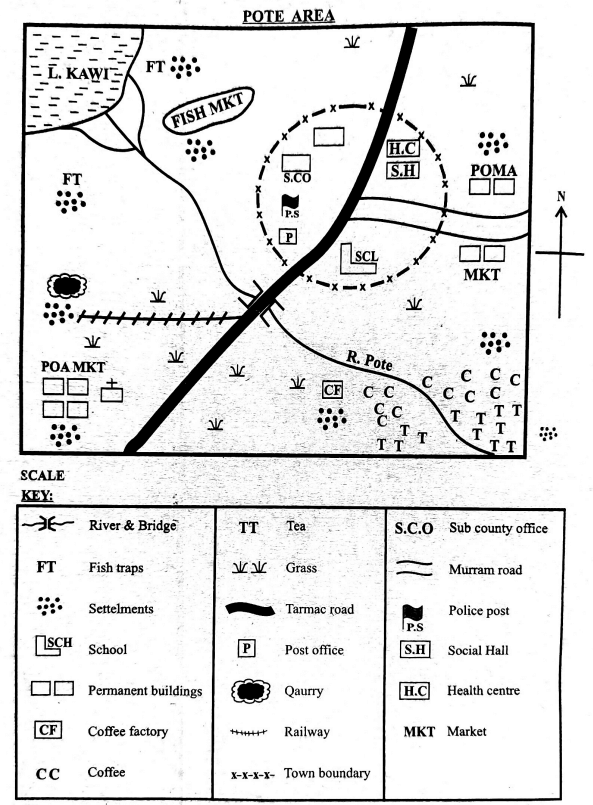
Study the map of POTE AREA and use it to answer questions 1 to 7.
- What is the general flow of River Pote in Pote area?
- South East to North West
- North West to South
- North East to South West
- South East to West
- What is the length of the railway in the map in kilometres?
- 5km
- 5.8km
- 6.2km
- 4.7km
- The population distribution in Pote area is mainly influenced by;
- transport system
- drainage system
- economic system
- security.
- The feature formed at the mouth of R. Pote is known as;
- confluence
- delta
- estuary
- tributary
- Which one of the following economic activities is not carried out in Pote area?
- Fishing
- Mining
- Crop farming
- Lumbering.
- The type of soil found at the mouth of R. Pote is likely to be;
- black valcanic
- alluvial soil
- sandy soil
- volcanic soil
- Pote town has grown to its present size mainly because of;
- government policy
- mining activities
- presence of a road junction
- security
- The following are Nilotes found in Eastern Africa. Which one did not disperse from Pubungu Pakwach?
- Lugbara, Acholi
- Luo, Acholi "
- Lango, Labwor
- Dinka, Shilluk
- Which one of the following was not a function of the clan elders in traditional African Societies?
- It protected the community
- It solved disputes
- It gave members a sense of belonging
- It assisted one another during difficulties
- Below are descriptions of a certain hominid.
- Made tools from stones.
- Ate cooked food.
- Communicated through speech.
The hominid described is likely to be;- Homo Erectus
- Homo Habilis
- Australopithicus
- Zijanthropus Boisei.
- The taking up of responsibilities and position of a person who has passed on is terms as;
- inheritance
- law of succession
- letter of administration
- succession.
- Which one of the following types of marriages allows polygamy and a marriage certificate to be issued?
- Civil marriage.
- Islamic marriage.
- Christian marriage.
- Customary marriage.
Use the diagram below to answer questions 13 and 14.
- The part marked Q is called;
- dyke
- lava
- vent
- conelet
- All the following are examples of the lakes formed at part R except;
- L. Paradise
- L. Shala
- L. Chala
- L Teleki.
- Which one of the following countries was used to resettle the freed slaves?
- Ethiopia
- Sierra Leone
- Nigeria
- Liberia.
- Why do police officers attend political rallies?
- To protect politicians.
- To control rioters.
- To ensure that those in attendance are secure.
- Because it is a requirement of the law.
- The main reason why Kenyans waged armed struggle against the colonialists was to;
- gain political independence
- get back their land
- get Western education
- protect their culture.
- It is the responsibility of the parents in a family to;
- buy anything their children ask for
- provide basic needs to their children
- beat their children
- respect and obey their children.
- Which one of the following statements is true about the weather instrument below?
- The tail points where the wind is blowing
- It is used to measure the strength of wind
- It is used to show the speed of wind
- The arrow points where the wind is blowing from.
- Which one of the following is the main factor that influences the population distribution in Africa?
- Economic factors
- Government policy
- Physical factors
- Social factors.
- The following are statements about a leader in Africa.
- He was champion of Pan Africanism
- He led his country to independence
- He was a founder member of OAU
- He retired voluntarily from active politics.
The leader described above is likely to be;- Leopold Sedar Senghor
- Nelson Mandela
- Jomo Kenyatta
- Haile Selassie.
- Which one of the following is the main reason that led to the fall of Buganda Kingdom?
- Collapse of the long distance trade.
- The coming of the British colonizers.
- Succession disputes.
- Attacks by the almoravids.
- The government of Kenya spends its revenue in all the following ways except;
- paying its workers
- building roads
- supporting emergency services
- paying fines for the law breakers.
- In the past, the Maasai and the Agikuyu mainly interacted through;
- wars
- ceremonies
- trade
- games and sports
Use the map of Africa below to answer questions 25 to 29.
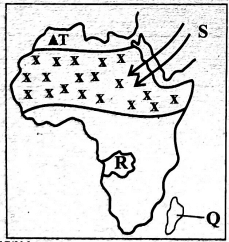
- The capital city of the country marked Q is;
- Moron
- Bamako
- Naukchott
- Antananarivo.
- Name the prevailing winds marked S;
- Harmattan winds
- Westerly winds
- North East trade winds
- South East monsoon
- The best explanation as to why the region marked XXX is sparsely populated is;
- it is covered with thick forest
- It is hot and dry
- It is mountainous
- It experiences floods.
- The country marked R is a former colony of the;
- British
- Spain
- Portuguese
- Germans.
- The mountain marked T was formed as a result of;
- volcanicity
- faulting and uplifting
- folding
- erosion.
- The main difference between the Fulani of Nigeria and the Maasai of Kenya is that;
- the Maasai keep cattle, sheep and goats while the Fulani keep pigs and camels only
- the Fulani use horse back to scout for pastures while the Maasai do not
- the Maasai live in temporary structures while the Fulani live in permanent structure
- the Fulani depend on meat and milk while the Maasai grow crops to supplement their diet.
- Which one of the following pre-historic sites is correctly matched with the country where it is found?
- Olduvai Gorge - Uganda
- River Omo Basin - Tanzania
- Orlogesaillie - Kenya
- Ishango - Ethiopia.
- Which one of the following is negative effect of physical features?
- Provide water for irrigation
- Help in the formation of rainfall
- They are sources of minerals
- They hamper construction of roads
- Which one of the following reasons has contributed to the high life expectancy in Germany?
- High standards of living.
- Small families.
- High population density.
- More old people.
- The following are political organisations formed in Kenya before 1939. Which one was the earliest?
- Young Kikuyu Association
- Kikuyu Association
- Young Kavirondo Association
- East African Association.
- The Harambee spirit is one of the national philosophies. It united Kenyans in eradicating all the following except;
- colonialism
- poverty
- diseases
- illiteracy
- In a school, conflicts can be resolved using the following methods except;
- mediation
- arbitration
- litigation
- negolfation.
- Which one of the following is not a use of cloves?
- Making body oils and lotion
- Making perfumes
- Food preservation
- Spicing food.
- Which one of the following is not a similarity in tourist attractions in kenya and Switzerland?
- Cultural attractions
- Snow-capped mountains
- Beautiful scenery
- Warm climate throughout the year.
- The following are problems facing settlement schemes in Kenya except:
- ethnic hatred and conflict
- improved standards of living
- poor state of roads
- inability to repay loans.
- Three of the following factors lead to slow population growth. which one does not?
- Favourable climate
- High standards of living
- Higher education
- Late marriages.
- Which one of the following is not a role of the school management committee?
- Deciding on new development.
- Hiring and dismissing school workers.
- Representing government in the school.
- Ensuring that the school standards are maintained.
- The following are traditional methods of observing weather. Which one indicated the coming of a dry season?
- A sudden rise in temperature
- The smell of moist soil
- Shedding of leaves by some trees
- Presence of dew in the morning.
- Three of the following are negative factors that influence climate change except;
- afforestation
- industrialisation
- global warming
- use of petrol as a source of energy.
- Which one of the following is not an importance of marriage institution in a community?
- Enhance unity and co-operation.
- Provide companionship.
- Promotes HIV/AIDS transmission.
- Develops responsibilities.
- The diagram below shows a road sign. It is an example of;
- warning sign
- regulatory sign
- informative sign
- no entry.
- Which one of the following UN agencies deals with the plight of refugees?
- UNESCO
- UNICEF
- UNHCR
- UNEP
- Three of the following are effects of the revolution of the earth. Which one is not?
- Causes different in seasons
- Causes difference in length of day and night
- Causes difference in time along different longitude
- Influences the position of the midday sun.
- L. Tana and L. Kivu were formed through a process called;
- downwarping
- volcanicity
- erosion
- human activities.
- Kamenju wants to start a bakery business. Which one of the following factors should he consider most?
- Availability of a market.
- Government policy.
- Security,
- Availability of raw materials.
- The Berlin conference marked the beginning of;
- abolition of slave trade
- partition of Africa
- establishment of traditional government
- construction of the railway line.
- The following are true statements about the Khoisan! Which one is not?
- They had a yellowish-brown complexion.
- Their language has a click sound.
- They were the earliest inhabitants of South Africa.
- They both had a centralized form of government.
- The method of irrigation used in Mwea Tebere irrigation scheme is;
- Basin irrigation
- Furrow irrigation
- Overhead irrigation
- Sprinkle irrigation.
- The method of fishing shown in the diagram below is likely to be used in;
- fish ponds
- deep seas
- lakes
- big rivers,
- The third chapter of the Kenya constitution deals with;
- the republic
- land and environment
- citizenship
- bill of rights.
- Which one of the following is the cheapest method of fish preservation?
- Sun drying
- Smoking
- Salting
- Canning:
- Which one of the following is a cause of conflict in the society?
- Corruption
- Democracy
- Fair distribution of resources
- patriotism.
- Cases concerning children are heard by the;
- Court of appeal
- The Supreme court
- Juvenile court
- Court martial.
- The best place to cross a busy road is;
- zebra crossing
- flyover
- round about
- foot bridge.
- Which one of the following was not a requirement for assimilation in West Africa?
- Readiness to practise French culture
- Ability to read and write in French
- Converting to Islamic
- One had to have only one wife.
- The following are countries of Africa. which one is correctly matched with its capital city?
- Angola - Port Novo
- Ivory Coast - Abidjan
- Egypt - Praia
- South Africa - Pretoria
PART TWO
CHRISTIAN RELIGIOUS EDUCATION
- The main reason why God sent man out of the garden of Eden was;
- the man had known good and evil
- the woman convinced man that the fruit was good
- man disobeyed God
- The serpent was cunning.
- After the floods, the first thing that Noah did was;
- counting the number of animals in the ark
- singing praises to God
- making an altar to the Lord
- opening the floodgates of heaven.
- Abraham is considered to be righteous because;
- he did not have children
- Sarah was old
- he gave birth to Isaac in old age
- he had faith in God.
- Joseph refused to have sex with Potiphars wife. Which commandment did he obey?
- Seventh
- Sixth
- Tenth
- Eighth
- These activities occurred during the passover. Which one is not correctly matched with its meaning?
- Blood on doorposts - protection
- Bitter herbs - slavery
- Eat while standing - hurry
- Unleavened bread - protection
- When Moses ran away from Egypt, he fled to;
- the land of Moab
- the land of Midian
- Jerusalem city
- Canaan.
- Which one of the following commandments did Ahab break?
- Do not covet.
- Do not commit adultery.
- Observe the Sabbath day and keep it Holy
- Honour your father and mother.
- Which one of the following miracles was performed by both Elisha and Elijah? A
- Healed people from leprosy.
- Multiplying oil.
- Raising the widow's son.
- Prophetical coming of the drought.
- Who among the only judges is Israel defeated his enemies with only 300 soldiers?
- Deborah
- Gideon
- Samson
- Samuel
- Who among the following prophets of the Old Testament prophesied about the coming of the Holy Spirit?
- Joel
- Isaiah
- Micah
- Jeremiah.
- Why did King Herod tell the wisemen to pass through his place and tell him about baby Jesus?
- He wanted to worship the baby.
- He wanted to be famous.
- He wanted to see his parents
- He wanted to kill the baby.
- When emperor Augustus ordered a census to be taken, Joseph went to the town of Bethlehem because;
- it was a religious center
- it was nearer Nazareth
- it was his ancestor's birth place
- he was commanded by an angel.
- When was Zachariah the father of John the Baptist doing, when an angel appeared to him? He was,
- preaching in the temple
- asleep
- offering a sacrifice
- burning incense.
- "This is my own dear son with whom I am well pleased." These words were spoken during;
- the birth of Jesus
- the baptism of Jesus
- transfiguration of Jesus
- ascension of Jesus.
- Which one of the following was not a teaching of Jesus about our enemies? We should;
- Be careful when eating with them
- love them.
- pray for them
- forgive them.
- The following accusations were made against Jesus when he was living with the Jews. which one was not? He was accused of;
- blasphemy
- claiming to be king
- working on the sabbath
- fighting against corruption.
- When Jesus was celebrating passover with his disciples during the last supper, he;
- named the greatest among the twelve disciples
- became transfigured
- fed 5000 people
- washed his disciple.
- Who offered his tomb for the burial of Jesus?
- Simon of Cyrene
- Simon Peter
- Joseph of Arimathea
- Andrew.
- Which one of the following happened on the day of Pentesoct?
- 3000 people were converted.
- Holy Spirit came down inform of a dove.
- Jesus ascended to heaven.
- There was darkness for three hours.
- Which one of the following statements found in the Apostle's creed shows that God is the Supreme being?
- Born of the virgin.
- Suffered under Pontius Pilate.
- Descended to the earth.
- Creator of Heaven and earth.
- The following are fruits of the Holy Spirit except;
- healing
- peace
- joy
- goodness.
- Which one of the following beliefs is found both in traditional African Societies and Christian?
- Jesus is the center of worship
- They believe in reading the scripture
- They believe in life after death.
- They believe in God created everything.
- Sacrifices in Traditional African Communities were offered to;
- appreciate God's gift of life
- break the relationship between the living and the ancestors
- be in good relation with God
- enable procreation,
- A baby was welcomed in the clan in Traditional African communities by;
- ululations done by the women
- offering sacrifices and giving offerings
- bringing presents to the baby
- poring libations severally.
- What was the significance of shedding of bllod during circumcission in traditional African societies?
- To unite them with the ancestors
- To make them special members
- To make them strong and healthy
- To prevent them from feeling pain.
- The following are benefits of sharing work except;
- harmony
- better relationship
- discomfort
- happiness.
- The best way for a christian to spend his leisure time is by;
- playing football
- watching movies
- visiting the sick
- visiting friends.
- Different learners celebrated the birth of Jesus in different ways. Who did not celebrate correctly?
- Anitah - Giving offering in church
- Janet - Sharing food in a beer party.
- Mariannah - Join her friends in a beer party.
- Paulette - Attends a worship service.
- Which one of the following statements best shows how christians are helping to reduce the spread of HIV/AIDS?
- Counselling those who are sick
- Providing drugs to the sick
- Keeping away from sinners
- Teaching others on behaviour change and morality.
- Who translated the New Testament Bible to Kiswahili?
- Jacob Ehdarat
- Johanne Rebman
- Ludwig Krapf
- Dr. David Livingstone
PART TWO
ISLAMIC RELIGIOUS EDUCATION
- A lesson that Muslims learn from Surah At-Takathur is that they should
- take care of orphans
- worship only one God
- keep away from worldly things
- observe punctuality in salah
- Which one of the following is a teaching from Surah Nasr?
- Allah is the Creator of the universe
- Victory comes from Allah
- Man was created in the best from
- Muslims should help the poor
- Which one of the following verses from the Quran is found in Surah Al-Kauthar?
- "Verily, you shall see the blazing fire"
- "Woe to every slanderer and backbiter"
- "And the mountains will be like carded wool"
- "Pray to your Lord and sacrifice to him alone"
- The Night of Qadr occurs in the month of
- Dhul Hijjah
- Dhul Qaadah
- Ramadhan
- Muharram
- The main message of Surah Al Ikhlas is
- Seerah
- Tawheed
- Muamalat
- fiqh
- The Surah that asks Muslims to seek refuge from the mischief of created beings is
- Al Fatihah
- Al Lahab
- Al Kafirun
- Al Falaq
- The Prophet (p.b.u.h.) said, "He is not among us who eats and fills up his stomach while his neighbor is hungry." The main teaching of this Hadith is: Muslims must;
- Not eat before their neighbours have eaten
- Treat their neighbours like brothers and sisters
- Not discriminate against their neighbours
- Share their food with their needy neighbours
- Which one of the following is an Islamic rule on eating?
- Eat the food when it is hot
- Start by reciting Bismillah
- Recite Alhamdulillah while eating
- Food should be eaten in a standing position
- Which one of the following Hadith condemns corruption in society?
- "The curse of Allah befalls on both the giver and the recipient of a bribe"
- "Whoever believes in Allah and the Last Day should not annoy his neighbor"
- "Tell the truth even though it is bitter"
- "Whoever is not thankful to people is not thankful to Allah"
- A sunnah act which is performed in preparation for Friday prayer is
- facing Qibla
- covering Aurah
- performing Wudhu
- performing Ghusl
- Which one of the following acts nullifies Saum?
- taking injection
- cooking food
- drinking water
- crying loudly
- Tayammum is an alternative to wudhu. Which parts of the body are common to both?
- forehead and ears
- legs and mouth
- face and legs
- arms and face
- The duty of Angel Israfil is
- blowing the trumpet
- removing the souls
- recording deeds
- bringing rain
- Who among the following Prophets of Allah showed the highest level of patience?
- Yusuf (AS) when thrown into the well
- Issa (AS) when he was rejected by his community
- Ibrahim (AS) on the fate of his sacrifice
- Muhammad (SAW) on the instruction to leave Makkah
- The main reason why Muslims offer greetings before other utterances is because;
- It is a way of making friends
- It is a way of showing concern
- It is a dua
- It is a way of drawing attention
- Which one of the following acts is most likely to lead to corruption?
- begging
- gambling
- taking part in sports.
- Borrowing money.
- When is the dua Alhamdulillah recited?
- Before entering the toilet
- Before meals
- When slaughtering an animal
- After completing a task
- During Lailatul Isra Wal Miraj the Prophet (p.b.u.h.) was commanded to
- fast during kamadhan
- give Zakat
- offer five daily prayers
- perform Hajj
- Which one of the following is the best way of celebrating Idd-ul-Fitr?
- Giving zakatul fitr and going for prayers
- Wearing new clothes and holding a feast
- Going for a family outing
- Visiting friends and relatives
- Which one of the following events took place in the month of Muharram?
- Prophet Muhammad (p.b.u.h) was born
- The Muslims conquered Makka
- Prophet Musa (AS) freed the Banu Israi from Firaun
- Muslims defeated the Quraish in the battle of Badr
- Ali who owns a shop gives the following business practices as his secrets of success. Which one of them is allowed in Islam?
- Hiding goods and selling them at a higher price later
- Allowing people to take goods and pay later
- Selling goods after their expiry date
- Lending money and charging interest on it
- Which one of the following business practices is forbidden in Islam?
- making profit
- charging interest
- selling goods on credit
- giving loans
- Three of the following are reasons why begging is discouraged in Islam. Which one is not?
- It leads to a waste of time
- It encourages laziness
- It leads to loss of self-respect
- It is a means of getting rich
- The first Muslim visitors to the Coast of Kenya came as
- traders
- preachers
- farmers
- doctors
- Which one of the following events took place during Laila-tul-Qadr?
- The Prophet gave his Last Sermon
- The Prophet was born
- The Prophet hid in the Cave of Thaur
- The first revelation of the Quran
- Who advised the Prophet (p.b.u.h.) to dig a trench round Madina during the battle of Khandaq?
- Abu Bakr
- Umar Ibn Khattab
- Salman Alfarsi
- Abu Talib
- The first child to embrace Islam was
- Ali
- Zaid
- Omar
- Uthman
- Majority of the Coastal tribes of Kenya embraced Islam mainly because they;
- Were forced by the Arab traders
- Admired the religious aspect of the Islam
- Were attracted to the open Islamic preaching
- Participated in debate with the Arabs
- Who among the following attended the prayer led by Prophet Muhammad (s.a.w.) at Baitul-Muqqadas during Miiraj?
- Prophets
- Swahaba
- Angels
- Family members
- Which one of the following is the place of worship for the Hindus?
- Synagogue
- Temple
- Church
- Mosque
MARKING SCHEME
SOCIAL STUDIES/ RE
- A
- B
- C
- B
- D
- B
- C
- D
- A
- A
- D
- B
- A
- D
- D
- C
- A
- B
- D
- C
- A
- B
- D
- C
- D
- C
- B
- C
- C
- B
- C
- D
- A
- B
- A
- C
- C
- D
- B
- B
- C
- C
- A
- C
- B
- C
- C
- B
- A
- B
- D
- A
- B
- C
- A
- A
- C
- D
- C
- D
C.R.E
- C
- C
- D
- A
- D
- B
- A
- C
- B
- A
- D
- C
- D
- B
- A
- D
- D
- C
- A
- D
- A
- D
- C
- A
- A
- C
- C
- C
- D
- C
I.R.E
- A
- C
- D
- C
- D
- A
- A
- C
- C
- C
- A
- C
- D
- B
- D
- C
- B
- A
- A
- B
- B
- B
- D
- D
- D
- B
- D
- A
- A
- A
Science Questions and Answers - Class 8 End Term Exams Term 2 2023 Set 2
- Which one of the following effects of drugs is correctly matched with its causes?
Effect Cause A. Drowsiness-
B. Cirrhosis -
C. Addiction -
D. Lung cancer-Injection of cocaine
Smoking of cigarettes
Chewing of miraa
Inhaling of cobblers - The main functions of white blood cells is to;
- fight disease-causing germs
- help in transportation of digested food
- carry oxygen from the lungs to the body
- help in clotting of blood
- The diagram below represents a set-up used by pupils to investigate a certain property of soil.
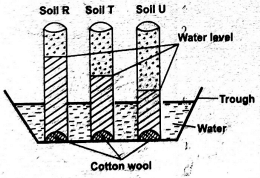
The property of soil investigated is;- drainage
- fertility
- capillarity
- téxture
- The best soil for modelling has;
- high water retention
- low capillarity
- coarse particles
- high drainage
- Which one of the following is a compound fertilizer?
- Calcilum Ammonium Nitrate
- Suphate of Ammonia
- Muriate of potash
- Diammonium phosphate
- Which one of the following is not a way of conserving water?
- Mulching
- using laundry water to clean a house
- Washing vehicles in a water body
- Recycling
- Which one of the following statements is not true about environment?
- It consists of the living things only
- Plants and animals produce carbondioxide.
- Water, air and soil make the non-living component.
- It refers to all things surrounding a living thing.
- Which one of the following is the best way of managing domestic waste in urban centres?
- Reducing its generation.
- Making compost manure.
- Onsite treatment.
- Using local authority services.
- Plants Q, R, S and T had the following characteristics:
Q-Needle-like leaves, thick cuticles
R-Flexible stem, floating leaves
T-Many stomata, waxy leaves.
Which pair of plants are adapted to the same habitat?- Q and R
- Q and S
- O and T
- S and R
- The force that opposes motion can be increased in the following ways except;
- making treads on wheels
- streamlining bodies
- Spreading coarse materials on road
- Making the surface rough.
- Which one of the following uses of heat is not correctly matched with its use?
Source of heat Use A. Gas
B. Sun
C. Fire
D. ElectricityIroning
Drying
Warming
Cooking - The following materials were collected by pupils during a Science practical lesson.
- Water in a basin.
- A clean mirror.
- A white board.
Which aspect of light were they investigating?- Dispersion of light
- Refraction of light
- Reflection of light
- How light travels
- Which one of the following best explains why people should not board matatus that play loud music?
- Makes communication difficult
- Loud sound may damage eardrums
- Loud sound may cause headache
- Loud sound may cause hallucinations
- The diagram below shows two pupils playing on a see-saw.
In order to balance;- Mark should move closer to F
- John should move closer to F
- both should sit at equal distance from F
- Mark should move further away from F.
- Which one of the following groups of materials consists only of good conductors of heat?
- Plastic, glass, copper
- Iron, silver, plastic:
- Glass, copper, gold
- Iron, gold, silver
- Which method of controlling weeds would a farmer apply in a nursery bed?
- Uprooting
- Applying herbicides
- Digging out
- Slashing
- Which one of the following groups consists only of useful small animals?
- Termites, butterfly, locust
- Bees, earthworms, locust
- Termites, bees, earthworms
- Bees, butterflies, earthworms
- The following are characteristics of a certain vertebrates:
- Presence of teeth.
- Presence of gills.
- Presence of tails.
- Presence of fins
- Presence of scales.
Which of the characteristics belong to fish only?- (i) and (ii)
- (ii) and (iv)
- (iii) and (iv)
- (iii) and (v)
- The following are rotational methods of grazing except;
- tethering
- zero grazing
- paddocking
- strip grazing
- Domestic animals are sprayed to control the following except;
- fleas
- tapeworm
- ticks
- lice
- A pupil intended to cut a piece of timber to repair a desk. The most appropriate tool for the work would be:
- hammer
- panga
- knife
- saw.
- A pupil had the following signs and symptoms.
- Skin rash.
- Blood in urine.
- Slight diarrhoea.
The pupil was most likely to be suffering from;- bilharzia
- cholera
- typhoid
- malaria.
- The teeth of carnivores are well spaced to;
- enable them to penetrate into flesh
- enable them to slice and crack bones easily
- prevent flesh from getting stuck between them
- enable them to catch and hold prey.
- A small stone sinks in water while a big log of wood floats. This is because of the difference in;
- shape
- weight
- material
- size.
- Weight is measured in;
- newtons
- kilograms
- volume
- kelvin
- Which one of the following methods of food preservation removes water from the food?
- Use of honey
- Salting
- Freezing
- Use of low temperature.
- Which one of the following can be transmitted from an infected animal to a healthy person?
- Malaria
- Anaemia
- Tuberculosis
- Flea.
- Which one of the following should be avoided when it is raining?
- Touching switches with wet hands.
- Overloading sockets.
- Leaning against walls.
- Putting on shoes with thick rubber soles.
- The following are products obtained from goats except;
- milk
- mutton
- wool
- mohair.
- To stop a moving object, the force applied should be;
- equal and in the opposite direction
- more and in the same direction
- less and in the opposite direction
- more and in the opposite direction.
- In the human digestive system, absorption takes place in all the following parts except one. Which one?
- Stomach
- Mouth
- Ileum
- Colon.
- Three of the following are reasons for H.I.V testing. Which one is not?
- To overcome fear
- To campaign for the spread of H.I.V
- To change behaviour
- To plan for the future one's dependants.
- Pupils of Milimani primary school made a weather instrument using the following materials.
- Thin walled glass bottle
- Biro pen tube.
- Manila paper.
- Coloured water in a basin.
- Stand.
- Rubber band.
Which principle does the instrument they made work?- Air in motion
- Liquid occupy space
- Liquid rise in straw
- Matter expands on heating.
- The diagram below shows a certain part of a flower.
Germination of pollen grains takes place in the part labelled;- X
- Z
- Y
- W
- Which one of the following pairs of processes both leads to the loss of heat to the surrounding?
- Melting and freezing.
- Melting and evaporation.
- Condensation and melting.
- Freezing and condensation.
- The diagram below shows the beak of a certain bird.
The bird is not likely to be a;- vulture
- hawk
- secretary bird
- swan.
- Which one shows all materials that cannot allow magnetism to pass through them?
- Iron, steel, nickel.
- Iron, copper, steel.
- Copper, steel, nickel.
- Alluminium, copper, silver.
- The following are all sources of current electricity except one. Which one?
- Car battery
- Geothermal turbines
- Dynamo
- Solar heater.
- Which one of the following is the functions of dietary fibre found in fruits and vegetables?
- Provides vitamins to the body.
- Helps in the movement of food in the alimentary canal.
- Provides energy to the body.
- Helps in the absorption.
- Infants needs to be breastfed for at least six months mainly because breast milk;
- makes them naturally more resistant to infections
- boosts their energy
- is readily available
- strengthens their bond with the mother.
- The following are causes of water pollution. Which one is not?
- Soil particles.
- Controlled use of fertilizers.
- Untreated sewage.
- Human wastes.
- The main reason why some plants that grow in dry areas have thorns is to;
- reduce water loss
- protect them from brousers
- store extra water
- to make food.
- The following are all pastures except;
- nappier grass
- desmodium
- kikuyu grass
- rhodes grass
- The toothless gap found on the front upper jaw is used for;
- turning of food for proper chewing
- crushing and grinding food
- rolling food in the mouth
- pressing and cutting grass while feeding.
- The diagram below shows a type of interdependence.
The type of interdependence shown is;- shelter
- food
- support
- habitat
- Which one of the following is not a function of the part labelled T on the diagram below?
- Entry of air
- Emergence of plumule
- Emergence of radicle
- Entry of water.
- The percentage of air that excludes oxygen during welding of metals occupy;
- 0.03%
- 0.97%
- 21%
- 78%
- The best method of controlling human. intestinal worms is;
- deworming
- wearing protective gear
- proper cooking of food
- proper sanitation.
- The diagram below shows a certain instrument.
Which is the function of the part labelled X?- Allows contraction and expansion
- Prevents bursting of the glass.
- Expanding the mercury.
- Allows the doctor to read th temperature.
- All thermometers have a scale on them called the;
- degree scale
- celsius scale
- thermometer scale
- temperature scale.
MARKING SCHEME
- C
- A
- C
- A
- D
- C
- A
- D
- B
- B
- A
- A
- B
- A
- D
- A
- D
- B
- B
- B
- D
- A
- C
- C
- A
- B
- C
- C
- C
- A
- B
- B
- D
- A
- D
- D
- A
- D
- B
- A
- B
- A
- A
- D
- D
- B
- B
- D
- D
- D
Kiswahili Questions and Answers - Class 8 End Term Exams Term 2 2023 Set 2
Soma vifungu vifuatavyo. Vina nafasi 1 hadi 15. Kwa kila nafasi umepewa majibu manne. Chagua lifaalo zaidi.
Mawasiliano ni sekta mojawapo __1__hatua sana __2__ kuvumbuliwa kwa teknolojia mpya. Siku hizi hata __3__ wanaohifadhi faili na kupokea simu ofisini wamepunguzwa. Ulimwengu umekuwa duara __4__ tu __5__ habari huweza kuenea __6__ katika muda mfupi sana. __7__, hakuna kizuri kisicho na dosari. Watu wenye __8__ mbaya wanatumia fursa hiyo kusambaza uvumi. Wengine husambaza picha zisizofaa __9__. Tusipochukua tahadhari tutaishia kujiuma kidole kwani
__10__.
| A | B | C | D | |
| 1. | zilizopiga | yaliyopiga | tulizopiga | iliyopiga |
| 2. | hadi | tangu | kuliko | kama |
| 3. | matarishi | masogora | wahazili | mabawabu |
| 4. | ndogo | dogo0 | kidogo | mdogo |
| 5. | ingawa | mathalani | lau | madhali |
| 6. | zote | kote | yote | lote |
| 7. | Labda | Vilevile | Hata hivyo | Isitoshe |
| 8. | nia | lengo | madhumuni | kusudi |
| 9. | redioni | magazetini | dunaini | mitandaoni |
| 10. | baada ya dhiki ni faraja | majuto ni mjukuu | mstahimilivu hula mbivu | dalili ya mvua ni mawingu |
Tangu siku zake za ujanani, Kiburi hakujua maana ya jirani __11__ siku moja __12__ na ya kumfika. Alikuwa __13__ watu ambao waliamini kuwa wakipatwa na __14__ ndugu atawasaidia. Alisahau kuwa __15__.
| A | B | C | D | |
| 11. | mpaka | baada ya | kisha | hadi |
| 12. | alipofikia | alipofikwa | alifikiwa | alifikwa |
| 13. | miongoni ya | katikati ya | kati ya | baina ya |
| 14. | siha | adhabu | maarubu | adha |
| 15. | fimbo ya mbali haiui nyoka | mtegemea cha nduguye hufa maskini | heri nusu shari kuliko shari kamili | akufaaye kwa dhiki ndiye rafiki |
Kutoka swali la 16 hadi 30 jibu kulingana na maagizo.
- Neno mwanahewa lina silabi ngapi?
- Tisa
- Tano
- Nne
- Nane
- Genge ni kundi la watu linalofanya kazi pamoja ilhali kenge ni;
- ndege mwenye sura kama ya paka
- mnyama wa porini afananaye na mbuzi
- samaki afananaye na nyoka
- mnyama kama mamba mdogo
- Ikiwa jana ilikuwa Alhamisi, mtondo ilikuwa;
- Jumatatu
- Jumapili
- Jumatano
- Jumanne
- Andika sentensi ifuatayo katika usemi wa taarifa.
Mama: Mwanangu, utanyolewa kesho jioni.- Mama alimwambia mwanangu angenyolewa kesho jioni
- Mama akamwambia mwanawe atanyolewa siku iliyofuata jioni.
- Mama alimwambia mwanawe kuwa angenyolewa siku iliyofuata jioni.
- Mama alimwuliza mwanawe kama atanyolewa kesho.
- Joka la indimu ni kwa inda ilhali mkono wazi ni kwa;
- ukarimu
- uchoyo
- ujanja
- uvivu
- Ni maelezo yapi sahihi?
- Tathlitha ni shairi lenye mishororo minne kila ubeti.
- Ngonjera ni shairi la historia.
- Malenga hutunga mashairi na nyimbo.
- Tarbia ni shairi lenye mishororo miwili kila ubeti.
- Ki imetumiwaje katika sentensi? Mwalimu alipoingia tulikuwa kukiimba.
- Kuonyesha udogo.
- Kuonyesha kuendelea kwa kitendo.
- Kuonyesha masharti.
- Kuonyesha namna.
- Miongoni mwa sehemu hizi za mwili, ni ipi iliyo tofauti na nyingine?
- Pafu
- Paja
- Kiganja
- Goti.
- Ni methali ipi yenye maana sawa na 'usiache mbachao kwa msala upitao'?
- Usione kwenda mbele kurudi nyuma kazi.
- Usipoziba ufa utajenga ukuta.
- Ganda la muwa la jana chungu kaona kivuno.
- Bura yangu sibadili na rehani.
- Tambua maneno yaliyopigwa kistari. Mwalimu mgeni atajiunga nasi mwakani.
- Kielezi, kihusishi
- Kivumishi, kiunganishi
- Kivumishi, kielezi
- Kiwakilishi, kivumishi.
- Ni jina lipi la makundi lisilofaa?
- Bunda la nyuki.
- Shehena ya mzigo.
- Chane ya ndizi.
- Kilinge cha wachawi.
- Chagua wingi wa sentensi ifuatayo.
Karani na wifi walifika jana.- Makarani na wifi walifika jana.
- Karani na mawifi walifika jana.
- Makarani na mawifi walifika jana.
- Akina Karani na wifi walifika jana.
- Ni sentensi gani iliyotumia kwa kuonyesha sababu?
- Amekula wali kwa mchuzi.
- Alifurahi kwa kufikia utu uzima.
- Tatu kwa tano ya wanafunzi ni wavulana.
- Maria ataenda kwa shangazi yake kesho.
- Ni nomino zipi zilizo katika ngeli ya I-I?
- Maji, marashi
- Meza, dawati
- Mkate, maembe
- Mvua, chumvi
- Ni nahau ipi yenye maana ya kupata taabu au shida?
- Kula mwata
- Kata kamba
- Piga mbiu
- Laza damu.
Soma kifungui kifuatayo kisha ujibu maswali 31 hadi 40.
Subira alikuwa barobaro ambaye hakujimudu kimasomo. Alikuwa kisubutu masomoni. Hata hivyo, alijaliwa kipawa katika riadha. Alionekana kila asubuhi akifanya mazoezi ya kukimbia. Wapo waliomhurumia kuwa huenda hakuwa na akili razini. Weng walisikika wakisema alikuwa akiadhibiwa na Mungu. Akiwa mkembe walidai kuwa alitumwa na nyanya yake gulioni lakini akakataa.
Watu wengi walijisaili mbona akaanza kukimbia miaka mitano baada ya nyanya yake kutembelewa na Izraili wa kaputi. Baada ya kufanya mazoezi kwa muda mrefu, Subira alianza kushiriki katika mashindano mbalimbali. Aliposhiriki mara ya kwanza, alishika nanga licha ya mazoezi ya bidii nyingi.
Aliendelea kufanya mazoezi pasi na kwenda nguu. Alivyozidi kujitahidi katika mazoezi ndivyo wengi walivyoendelea kumbeza. Hakubwaga silaha kamwe. Aliamini lisani ya wahenga isemayo kuwa atafutaye hachoki na akichoka keshapata. Mwaka uliofuata akiwa na umri wa miaka kumi na sita alishiriki tena katika mbio za masafa marefu. Alipata mwamko mpya alipofahamu kuwa ingawa hakushinda hali yake ilizidi kuimarika.
Alizidi kujiongeza maarifa. Akawa na matumaini kama tai kuwa siku moja angeibuka kifua mbele. Nusu mwaka baadaye, Subira alichaguliwa kuwa miongoni mwa wawakilishi wa nchi yao katika mbio za masafa marefu duniani. Huo ukawa ndio mwanzo mkoko unaalika maua. Nyota yake ikaanza kung'aa na mambo yakaanza kumwendea mserego. Aliamini lisani ya wahenga isemayo kuwa papo kwa papo kamba hukata jiwe.
Ulimwengu mzima ulishuhudia Subira akinyakua nishani ya dhahabu katika michezo hiyo duniani. Subira aliyekuwa akidhalilishwa na kupakwa tope akawa anasifika kote. Jina lake likawa kibwagizo midomono mwa wengi. Miaka michache baadaye akawa tajiri wa kutajika. Waliomcheka wakakosa pa kuziweka nyuso zao. Walipata funzo kuwa dhamira ni dira na nia zikiwa pamoja, kilicho mbali huja karibu.
- Kulingana na aya ya kwanza, ni kweli kusema kuwa;
- Subira alikuwa wembe shuleni
- Subira alifanya mazoezi ya kukimbia machweo
- Subira alihurumiwa na wanakijiji wote
- Subira hakujiweza sana masomoni
- Baadhi ya wakazi walisema kuwa Subira alikuwa akiadhibiwa kwa sababu;
- hakuwa na akili timamu
- akiwa mdogo alitumwa na bibi yake lakini akakataa
- hakuwa mcha Mungu
- mienendo yake haikuvutia
- Neno gulioni lina maana gani kulingana na kifungu?
- Sokoni
- Dukani
- Mtoni
- Shambani
- Ni methali ipi mwafaka kuelezea tabia za Subira baada ya kushindwa katika jaribio la kwanza?
- Mbio za sakafuni huishia ukingoni
- Asiyekujua hakuthamini.
- Kuvunjika kwa mwiko si mwisho wa upishi.
- Mtegemea nundu haachi kunona.
- Ni nini maana ya alishika nanga kulingana na kifungu?
- Alipoteza matumaini
- Alikuwa wa mwisho.
- Alibadili nia.
- Alikuwa wa kwanza.
- Kushinda kwa Subira hatimaye kulitokana na;
- ujuzi, bidii na tamaa
- umri, ujana na utepetevu
- laana, maarifa na bidii
- bidii, ulegevu na ujuzi.
- "Akawa na matumaini kama tai." Hii ni mfano wa fani ipi ya lugha?
- Kinaya
- Chuku
- Istiara
- Tashbihi.
- Subira alikuwa akishiriki michezo katika dunia nzima. Hii inamaanisha alikuwa;
- hadhi yake ya kimichezo ilipanda
- mtalii wa kutembelea mataifa
- mweledi wa kusafiri miji mikubwa
- mpenda anasa za dunia.
- Ni nini maana ya kupakwa tope kulingana na kifungu?
- Kutegemewa
- Kuharibiwa jina
- kuaibishwa
- kuchukizwa.
- Kichwa kinachofaa kifungu hiki ni kipi?
- Juhudi si pato.
- Tusiwe wa kutegemea wengine.
- Uvumilivu hutamausha maishani.
- Tusikate tamaa.
Soma kifungu kifuatacho kisha ujibu maswali 41 hadi 50.
Kila mwanadamu ameumbwa akiwa na uwezo wake maalum. Mungu alifanya hivyo makusudi kabisa. Hebu fikira ulimwengu wenye watu ambao kila mmoja anajitosheleza. Yaani kila mtu anaweza kujifanyia kila kitu apendavyo. Ulimwengu usingehitaji watu wanaosomea kazi mbalimbali wala watu wasingetegemeana. Upendo na huruma vingekuwa havipo dunaini.
Mungu aliwaumba watu na vipawa vyao mbalimbali. Hata wanaofikiriwa kuwa hawana vipawa, ukiwachunguza vizuri utaona kuwa wana upekee fulani katika jambo wanalolimudu vizuri. Wakati mwingine, sio lazima jambo hilo liwe kubwa sana kiasi cha watu kulizungumzia. Kuna watu wasiokuwa na uwezo mkubwa wa kiuchumi lakini waliobarikiwa kwa uwezo wa kuzungumza vizuri au uwezo wa kuwashauri wengine wenye mahitaji mbalimbali. Hili linatukumbusha kuwa hata vipawa tunavyofikiri kuwa si vikubwa vina thamani kubwa ajabu.
Ingawa kila mtu ana kipawa chake, kuna watu wengi wasioweza kutambua vipawa vyao. Sababu moja inayowafanya washindwe kutambua vipawa hivyo ni kule kutokuwa na mtu wa kuwaongoza na kuwahimiza kuandama safari ya vipawa vyao. Sababu nyingine ni kwamba watu wengine hawaviamini wala kuvithamini vipawa vyao. Kwa mfano mtu anaweza kuwa na kipawa cha kucheza kandanda lakini akawa anataka kuwa daktari hata kama huo udaktari haumo katika damu yake. Mtu anapopuuza kipawa chake na kukifuata kingine tofauti huwa hana hamy na raha ya kufanya kazi ambayo hatimaye atakuwa amechagua kuifanya.
Wakati mwingine watu hupotishwa kuviacha vipawa vyao. Jamaa na marafiki huweza kumshawishi mtu kukiacha kipawa chake na badala yake kukifuata kile cha wale wanaomshauri. Mara nyingi wanaomshawishi mtu kuacha kipawa chake huwa hata hawajauelewa uwezo wa wanayemshauri. Japo watu wengine hufanikiwa kwa kuelezwa kufuata njia ambayo haikuwahusu, wengine hushindwa kufanikiwa, huwa kuna asilimia kubwa inayojilazimisha kuifanya kazi amambo haihusiani na talanta yao moja kwa moja.
Ni vizuri kutambua kwamba kuwa na kipawa tu hakutoshi. Kipawa cha mtoto ni mche unaohitaji maji, mwanga na mazingira mazuri yasiyo na magugu ili uweze kuimarika na kustawi, la sivyo utanyauka na kukauka. Mwenye kipawa anafaa kukilea kwa kukifanyia mazoezi ili kukiboresha. Anafaa kuwa na nidhamu ya kukiendeleza hadi kitakapokomaa. Anahitaji kufuata ushauri na mwongozo wa watu wengine ambao wamekitumia vizuri kipawa sawa na chake.
Tunafaa kutambua kuwa vipawa ni vingi jinsi walivyo watu. Vilevile hata watu wenye kipawa kile kimoja wana uwezo tofauti. Kama wasemavyo wahenga akili ni nywele kila mtu ana zake. Tukumbuke kuwa hata vidole havilingani
- Kulingana na aya ya kwanza ni kweli kuwa;
- bila kuwa na elimu wanadamu hawawezi kusaidiana
- kila binadamu ana mambo maalum anayopenda
- watu wanaojifanyia kila kitu huwashangaza wanajamii
- hali ya kutegemeana husaidia kujenga maadili.
- Kwa mujibu wa aya ya pili;
- watu wengi hudhani kuwa wengine hawana vipawa
- kuna vipawa vya thamani kuliko vingine
- wakati mwingine watu wenye vipawa hawagunduliwi
- wasiokuwa na uwezo mkubwa wa kiuchumi wamebarikiwa.
- Kifungu kinaonyesha kuwa watu wengi hawawezi kutambua vipawa vyao kwa sababu;
- hukosa mwongozo unaofaa wa kukuza vipawa vyao
- huwa hawafurahishwi na vipawa vyao kama wenzao
- huwaza kuwa kutambua vipawa kunachukua muda mrefu
- hufikiri kuwa kipawa cha udaktari ndicho bora maishani.
- Ni kauli ipi sahihi kulingana na kifungu?
- Wasiojua umuhimu wa kazi huwazuia wengine kushughulikia kazi zao
- jamaa na marafiki huweza kumnyima mtu fursa ya kukuza kipawa chake
- wanaotoa ushauri kuhusu vipawa huwa wanawajua wenye vipawa hivyo
- kubadilisha kazi huifanya isiwe ya kuvutia kwa wale wanaifanya
- Kifungu kimebainisha kuwa;
- watu hufanya vizuri kuwashauri wengine kuacha vipawa vyao
- ushawishi wa marafiki huwa mkubwa zaidi kuliko wa wenye kipawa
- baadhi ya wanaoshauriwa kufuata vipawa tofauti na vyao hufaulu maishani
- ukujazi wa vipawa hutofautiana kulingana na imani ya mtu kwa Mungu
- Ni maelezo yapi si sahihi kulingana na mwenye kipawa?
- Anahitaji kukifanyia mazoezi ili kukiboresha
- Anahitaji kuhakikisha amekiimarisha hadi kitakapokomaa.
- Anafaa kufuata mfano wa wengine wenye vipawa sawa na chake.
- Anafaa kuwategemea wengine kukijenga kipawa chake
- Ni neno lipi ni kisawe cha kipawa?
- Nishani
- Ilhamu
- Kipaji
- Dhima
- Maneno... kipawa cha mtoto ni mche unaohitaji maji." yametumia fani ipi ya lugha?
- Istiara
- Tashbihi
- Kinaya
- Majazi
- Katika kifungu maana ya methali "Akili ni nywele kila mtu ana zake' ni;
- watu wenye hamu ya kushirikiana hutofautiana
- viwango vya uwezo wa watu vinatofautiana
- mitazamo ya watu kuhusu vipawa ni tofauti
- watu wanaothamini vipawa hutofautiana.
- Ni nini maana ya wanalolimudu kama ilivyotumiwa katika kifungu?
- Wanaloweza kulifanya
- Wanalolipenda
- Wanaloliamini
- Wanalofurahia kulipenda.
INSHA
Umepewa dakika 40 kuandika Insha yako.
Malizia insha yako kwa maneno haya.
................................................................................................................Hakika tukio la siku hiyo haliwezi kusahaulika maishani.
MARKING SCHEME
- D
- B
- C
- A
- D
- B
- C
- A
- D
- B
- D
- B
- C
- D
- A
- C
- D
- A
- C
- A
- C
- B
- A
- D
- C
- A
- C
- B
- D
- A
- D
- B
- A
- C
- B
- A
- D
- A
- C
- D
- D
- C
- A
- B
- C
- D
- C
- A
- B
- A
English Questions and Answers - Class 8 End Term Exams Term 2 2023 Set 2
Read the letter below. It contains blank spaces numbered 1 to 15. For each blank space choose the best alternative from the choices given.
Dear Editor,
My name is Abigael Mwikali. I __1__ something that I would like to share with my fellow youth and Kenyans in __2__.__3__
is the use of sheng. Experts say that sheng is a mixture and corruption of Kiswahili, English and a sprinkling __4__
local languages.
Let me be very candid. Sheng should be __5__ because it dilutes, pollutes and erodes the standards of English, Kiswahili __6__ local languages. It __7__ people to switch from one language to another and mix them at will. It does not __8__ to any rules and standards. This affects the mastery of any one language. The widespread of sheng is to blame for the __9__ performance in English and Kiswahili in the K.C.P.E examination.
__10__ people and professionals do not use sheng. In deed no self-respecting individual would be held using the weird language, if it qualifies to be called a language. It is the __11__ of conmen who rely on it to __12__ disrespectful and inane messages. It is __13__ the language of result for deviant and rebellious teenagers in school and at home. In __14__ it, they show disrespect to authority and order. Policy makers should outlaw sheng __15__ they are serious about developing foreign, national and local languages.
Yours truly,
Abigael Mwikali.
Standard 8 pupil.
| A | B | C | D | |
| 1. | posses | had | have | has |
| 2. | particular | fact | general | dead |
| 3. | Its | This | These | Here |
| 4. | in | on | for | of |
| 5. | destroyed | dismissed | banned | unused |
| 6. | then | and | before | together |
| 7. | allows | let's | shows | stops |
| 8. | confirm | follow | confine | conform |
| 9. | poor | good | excellent | slow |
| 10. | Youthful | Respectively | Respectable | All |
| 11. | properly | preserve | thing | idea |
| 12. | pass | tell | use | say |
| 13. | also | however | so | now |
| 14. | having | using | talking | showing |
| 15. | if | since | because | un/ess |
For question 16 to 18, choose the best answer to complete each sentence.
- They __________________ on the beach, enjoying a cool breeze.
- laid
- lain
- lay
- lied
- We watched the soldiers _______________________ majestically into the stadium.
- much
- match
- munch
- march
- If you are not careful, you will ______________________ all your friends.
- lose
- loss
- loose
- lost
For questions 19 and 20, choose the word that means the anatomy of the underlined word.
- The whole town celebrated the freedom of the hostages.
- humility
- captivity
- ability
- festivity
- We felt inferior when the other pupils started laughing at us.
- exterior
- junior
- interior
- superior
For questions 21 and 22, choose the correct meaning of the given idiom.
- To be at logger heads.
- To have a headache
- To be quarreling
- To be confused
- To get along well.
- To give someone a cold shoulder.
- To treat someone harshly
- To be unfair to someone
- To make someone feel unwelcome
- To be hostile to someone.
For questions 23 and 24, choose the correct order of adjectives to fill in the blank spaces.
- Diana bought a ___________________ dress.
- long, costly, beautiful
- beautiful, long, costly
- costly, beautiful, long
- beautiful, costly, long
- Aunt Rose married a ________________ man.
- tall, dark, handsome
- handsome, dark, tall
- handsome, tall, dark
- dark, handsome, tall
For questions 25, choose the correct phrasal verb to complete the sentence.
- Marube finally __________________________ his alcohol addiction.
- got down
- got off
- got out
- got over
Read the passage below and then answer questions 26 to 38.
It was on Thursday morning during the school holidays when Otieno was alone at home. His younger brother, Sam and three sisters had gone to play with the children of the neighbours. To while the day away, he had been sitting down under a tree reading an interesting storybook. His mind had been fully absorbed in the story that he was reading. Suddenly he remembered that he has Science homework to do. An experiment of all things! But the temptation to read the storybook was irresistible. Could the homework wait until later? Nevertheless Otieno reluctantly put down the book and decide to carry out the experiment.
As he was rushing to the kitchen, he slipped in a puddle of water which he had forgotten to wipe and found himself skidding on the floor. He was left unscathed as he hurt his ankle.
On most occasion, Otieno liked using his home-made burner to carry out Science experiments in his bedroom. He impatiently tried to look for his burner but he could not find it. After failing to trace the burner, he got hold of his salt solution and switched on the cooker. He became impatient as the cooker seemed to heat rather slowly, as if on purpose just to annoy him. But as he put the container on the cooker what he did not realise was that he had switched it on fully. Then Otieno went back to his book and left the solution boiling, hoping to be back in a few minutes. The part he was reading become so exciting that he soon forgot about the experiment. tied up with ropes and The story was about a detective who had got himself locked up in a room, a time bomb in a corner ready to blow up any minute! He was counting the minutes and.....
Suddenly, Otieno heard a loud bang go off somewhere in the kitchen within a fraction of a second. He thought that the bomb had actually exploded, killing the poor detective. Then he remembered his experiment!
Otieno immediately threw his book aside and run to the kitchen where he found smoke billowing from the cooker. he was shaken and frightened even as he tried to turn off the cooker and inspect th damage. Fortunately there was nothing amiss with the cooker.
He hurriedly removed all traces of the burnt solution and cleaned up the messed up place before his parents arrived home from work.
From that day he resolved to always do one thing at a time and at least read storybooks after finishing all other household chores.
- What time is referred to in the first sentence?
- Before midday
- After sunset
- Between midnight and midday
- Between midday and sunset
- To while the day away' mean to;
- waste the day
- spend the day pleasantly
- do something naughty
- get involved in negative activities
- When Otieno thought of the Science experiment, he;
- stopped reading at once
- began to while the day away
- was briefly undecided
- continued reading briefly
- Why did Otieno decide to read a storybook?
- The book belonged to him
- He was sitting under a tree
- There was nothing else to do
- He was at home
- "An experiment of all things! This expression suggested that Otieno;
- detested Science experiments
- had many things on his mind
- liked doing experiments, especially Science one
- was a very busy boy
- The word 'reluctantly' as used in the passage, its opposite is;
- hurriedly
- carefully
- slowly
- eagerly
- What made Otieno hurt his ankle?
- It is normal for boys to hurt themselves
- He was naturally a very careless boy
- In his hurry, he skipped on the floor
- He could tread himself easily
- The word 'unscathed' can be replaced with;
- unhappy
- uninjured
- badly injured
- slightly injured
- Which of the following is not true about the home-made burner?
- Otieno often used it in his bedroom
- It was used by Otieno for Science experiment
- Otieno used it mainly for Science experiment
- Otieno could not trace it when he needed it
- It is true to say that Otieno used the cooker because;
- he wanted quick results
- it was better than his burner
- his burner was unavailable
- cooker are safer to use than burners
- Why did Otieno soon forget about his experiment?
- His mind was on the loud bang in the kitchen
- All his attention was on the story
- The death of the poor detective saddened him
- The cooker was heating slowly to annoy him
- How did Otieno escape possible punishment?
- By switching off the cooker
- By finishing his experiment on time
- By lying to his parents about the cooke
- By cleaning up the mess before his parents arrived home
- Which of these proverbs correctly summarises the story?
- Patience pays
- Better late than never
- Every cloud has a silver lining
- Never judge a book by its cover.
Read the passage below and then answer questions 39 to 50.
We cannot deny the fact that corruption has taken root in our society. It is an evil we must do everything possible to fight. Corruption manifested itself in different ways and may mean different things to different people.
Giving or receiving bribes and land grabbing are acts of corruption. So is the misuse of power by people to gain advantage for themselves or for their relatives and friends.
Embezzlement, or stealing money belonging to your employer, or money you have been given responsibility to be in charge of, is an example of misuse of power and authority. People who practice tribalism, nepotism or favouritism when recruiting 'others to jobs or during selection for admission to institutions of learning are engaging in corruption. There are also those who forge certificates or other people's signatures for selfish gains. Others put public property to private use or receive payment for goods that are partially supplied or not supplied at all.
Corruption goes beyond offices, businesses and other formal organizations. Ordinally people engage in corruption too. When small scale farmers add water to their milk or traders stuff the bottom of their containers of potatoes or charcoal before selling their goods to unsuspecting customers, aren't they involved in acts of corruption?
Pupils have not been spared this evil either. Some often jump queues, give or receive small bribes, cheat in the examinations and steal or use school property irresponsibility.
Finally corruption can be done using lawful punishment, for example, taking to court those who engage in any form of abuse of office. Preventive measures can also help the fight against corruption. There include improving the way organisations work, reviewing workers' salaries and educating the youth on morals such as integrity and honesty. All of us - the government, organisations including schools and individuals of all age and social status - should make it our responsibility to fight corruption. We should report cases of corruption to relevant authorities and encourage others to shun the vic
- What is meant by 'corruption has taken root?'
- Corruption is widely practised
- We cannot do much about corruption
- Corruption is not properly fought
- Many people know about corruption
- Why is corruption described as evil?
- It is feared by many
- It is done secretly
- It is harmful and immoral
- Its effects are feared by many.
- Which of the following is an act of corruption?
- Helping our friends and relatives
- Rejecting bribes offered to us.
- Using of power provided by government
- Accepting bribes to help people.
- Embezzlement is;
- being in charge of money
- taking money from your bank account
- stealing money from friends
- stealing money from your work place.
- Which of the following is not a negative deed?
- Nepotism
- Recruitment
- Forgery
- Favouritism
- The example of charcoal, milk and potatoes is meant to show that;
- farmers and traders cannot be trusted
- most farmers and traders are corrupt
- office workers are not as corrupt as ordinally people
- corruption is found in all level of society
- Which of these statements is true about pupils?
- They are more corrupt than other people
- They are also not free of corruption
- They are corrupt only when they are in school
- Their corruption is not as serious as that of adults
- Pupils have not been spared this evil. which evil is this?
- Corruption
- Irresponsibility
- Forgery
- Tribalism
- Which of the following is not a proper way of fighting corruption?
- Improving salaries of corrupt people
- Taking corrupt people to court
- Teaching the young to be honest
- Making salaries of employees better
- Which of the following is true according to the passage?
- Corruption promotes development
- To gain advantage over others is corruption
- We should sometimes report corruption cases
- Everybody should join the anti- corruption crusade
- The word shun can be replaced with;
- report
- avoid
- destroy
- practice
- Which of the following would be a suitable title for this passage?
- Why people engage in corruption
- Why pupils are corrupt
- Corruption in the society
- How corruption affects the poor
COMPOSITION
You have 40 minutes to write your composition.
Below is the beginning of a composition. With your own words finish it making it as interesting as possible.
The day dawned like any other and we had high hopes. Little .............................................................................................
MARKING SCHEME
- C
- C
- B
- D
- C
- B
- A
- D
- A
- C
- B
- A
- A
- B
- A
- C
- D
- A
- B
- D
- B
- C
- D
- C
- D
- C
- B
- C
- C
- A
- A
- C
- B
- D
- C
- B
- D
- A
- A
- C
- D
- D
- B
- D
- B
- A
- A
- D
- B
- C
Mathematics Questions and Answers - Class 8 End Term Exams Term 2 2023 Set 2
- Write six million six hundred and nine thousand nine hundred and nine and nine hundredths in numerals?
- 6609609.09
- 6609909.09
- 6660999.9
- 6609909.009
- What is the place value of digit 2 in the product of the value of digit 4 multiplied by the total value of digit 3 in the number 57438?
- Ones
- Thousands
- Tens
- Hundreds
- What is the next number in the sequence below?
113, 94, 77, 64, 53, _______________?- 46
- 62
- 44
- 40
- What is the value of:
24 ÷ 3 + 4 x 5 − 8 ÷ 4 x 10 + 1?- 7
- 9
- 41
- 131
- In a shop 90kg of sugar were repacked into 200g packets and 500g packets. If there were 250 packets of 200g each, how many packets were there altogether?
- 80 packets
- 230 packets
- 330 packets
- 100 packets
- Which of the following measurements can be used to draw a right angle triangle?
- 5cm, 12 cm, 15cm
- 3cm. 6 cm, 7cm
- 9cm, 16cm, 25 cm
- 7cm, 24cm, 25cm
- The base of a rectangular water tank measures 2.2m by 1.5m. Its height is 3m. How much water can it hold when half full?
- 9900 L
- 4500 L
- 9000 L
- 4950 L
- Find the area of the figure below.
- 490m2
- 336m2
- 154m2
- 254m2
- The sum of three consecutive numbers is 69. Which is the largest number?
- 20
- 22
- 21
- 19
- Calculate the volume of an open tin whose diameter is 1.4m and its height is 2m.
- 30800
- 308
- 3080000
- 308000
- The area of a protractor is 308cm2. What is the perimeter of the protractor? (π =n 22/7)
- 44
- 28
- 72
- 88
- A meeting was attended by 3670 people. The number of men was twice that of children and 30 less than that of women. How many women attended the meeting?
- 1245
- 2586
- 3149
- 1486
- The area of a square carpet is 4m2. Four such carpets completely covers a square room. Calculate the perimeter of the room.
- 8m
- 12m
- 16m
- 24m
- The area of the figure below is 104 cm2.
What is the length of line AB?- 20cm
- 204cm
- 10cm
- 12cm
- What is the value of:
2 − 1¼ of 71/5 ÷ 45?- 3
- 11/5
- 14/5
- 34/5
- The marked price of a shirt is sh. 500. Wanyama was given a 15% discount when he bought it. He then sold it making a profit of 10% profit. For how much did he sell the shirt?
- Sh. 475
- Sh. 425
- Sh. 625
- Sh. 467.50
- A society had 3.6 ha of land. 0.6 ha of the land was set for construction of roads. The rest was subdivided into equal plots each measuring 60m by 50m. How many plots were obtained?
- 50
- 12
- 10
- 5
- A man shared his pieces of land between his two sons such that the elder son got 3/5 of the land. What is the ratio of the land belonging to the younger son to that of the older son?
- 3:5
- 2:3
- 3:8
- 5:3
- The hire purchase of a T.V set is 40% more than the cash price. The cash price is sh. 20000. Joy paid sh. 2100 as a monthly installment for 10 months. How much was the deposit paid?
- Sh. 8000
- Sh. 13000
- Sh. 7000
- Sh. 100020.
- What is the value of: 1.5 + 0.9 of 2.5 − 1.42 ?
0.4- 5.824
- 5.85
- 5.88
- 10. 85
- What is the size of the reflex angle XYZ?
- 318°
- 218°
- 42°
- 324°
- The temperature of frozen ice was −45°c. It was heated until the temperature rose by 68°c. What was the final temperature of water?
- 53°c
- 23°c
- 113°c
- −53°c
- Nyoro left his home for Nyeri at 0815 hrs. He arrived at Nyeri at 1045hrs. If the distance between his home and Nyeri was 120km. Calculate the average speed.
- 30km/h
- 48km/h
- 60km/h
- 300km/h
- The floor of a room measuring 6m by 4.5m by 3m high is completely covered by square tiles each of side 30cm. How many tiles are there?
- 300
- 30
- 640
- 280
- Marion had sh. 40000. She deposited the whole amount in a financial institution that pays simple interest at the rate of 4% p. a. She withdrew all her interest after 28 months. How much money did she withdraw?
- Sh. 42400
- Sh. 2400
- Sh. 36400
- Sh. 4200
- Round off 799.9875 to the nearest tenths.
- 800
- 799.9
- 800.0
- 790.9
- A train took 20 sec to pass through a tunnel. If the length of the tunnel was 0.6km. What was its speed in meters per second?
- 15m/s
- 30 m/s
- 25 m/s
- 45 m/s
- In Sunrise Academy, pupils were asked to choose their favorite food among mukimo, githeri and chips. The information was represented in a pie chart as show below.
If 280 pupils like chips, how many more pupils like mukimo than githeri?- 120
- 40
- 200
- 80
- 12 men can do a piece of work in 20 days. After working for 4 days, 4 more men were employed. How many less days will the work take?
- 12
- 8
- 16
- 4
- Constant a triangle WXY with XY = 7cm,WY = 8cm and WX = 6cm. Draw the angle bisectors of angle YWX and angle WXY to meet at P. Construct a circle touching the edges of the triangle. Measure its radius.
- 4cm
- 6.4cm
- 2cm
- 3.2cm
- 3.2 cm on a map represents an actual length of 9.6km on the actual ground. What is the scale used?
- 1:3000000
- 1:3000
- 1:300000
- 1:30000000
- In the triangle ABC below, BD = BC. Angle ABC = 50° and angle DCA = 25°. Line BDA is a straight line. Find the size of angle CAB.
- 30°
- 65°
- 50°
- 40°
- A rectangular field has an area of 0.6 ha. If the length measures 120m, how long is its diagonals?
- 130m
- 13m
- 50m
- 24m
- Solve the value of p
1⁄2 (12p − 6) − 2p + 12 = 30- 20
- 10
- 16
- 8
- Oliech bought the following items from a wholesale shop.
2kg of rice @sh 120
2-2 kg packets of wheat flour @sh 140
1 kg of sugar @sh 124
2 packets of leaves for sh. 120.
Oliech paid using two notes of sh 500. How much balance did he receive?- Sh 824
- Sh 124
- Sh 114
- Sh 176
- Tap A takes 6 minutes to fill a tank while tap B takes 8 min to empty the same tank. If both taps are opened at the same time, how long will they take for the tank to be full?
- 12min
- 1 min
- 14min
- 24 min
- Three pupils gave out some money to buy a textbook. Mary gave sh 20 more than Atieno white Peter gave twice as much as Atieno. If Mary gave sh m, which of the following expressions represents the total amount given by the three pupils?
- 4m +60
- 4m.+ 20
- 4m − 60
- 4m − 40
- The mass of 8 pupils were recorded as
35kg, 32kg, 28kg, 25kg, 38kg, 23kg, 40kg and 37kg.
What was the median mass?- 30
- 331/2
- 331/4
- 321/5
- What is the value of:
0.51 × 3.25
1.7- 0.975
- 975
- 97.5
- 9.75
- Jelimo sold an item for sh. 144 making a loss of 10% .At what price must he sell it to make a profit of 20% ?
- Sh 160
- Sh192
- Sh 172.80
- Sh 158.4041.
- Work out:
÷ 1/3
- 1/6
- 7
- 1/9
- 21/3
- The price of a coat was reduced by 800 shillings. If this represents 20% of the marked price, what was the marked price of the coat?
- Sh. 80
- Sh. 1600
- Sh. 4000
- Sh. 1200
- A rectangular container measures 80cm by 4/5 m by 0.5m. Calculate it's capacity when half full.
- 160 L
- 320 L
- 200L
- 400 L
- Kimani slept fir 9hr 45 min. He woke up at 0500 hrs: What had he slept?
- 2.45 pm
- 7.15 pm
- 7.55 pm
- 7.15 am
- Below are properties of a quadrilateral.
- Interior angles add up to 360°
- Has two pairs of parallel lines.
- Diagonals are equal and meet at a right angle.
What figure is described above.- Rhombus
- Square
- Trapezium
- Rectangle
- The perimeter of the isosceles triangle UVW shown below is 50cm. Find its area.
- 60cm2
- 120cm2
- 96cm2
- 136cm2
- A semi-circular plot of land of diameter 36m was fenced round. Poles were erected all round at interval of 4m. How
many poles were used?- 37
- 35
- 38
- 36
- What is the value of 0.294 correct to 2 decimal places
- 0.73
- 0.72
- 7.25
- 0.07
- Given that Ty = 16.5 × 0.2
4
and Y = 8.25, what is T?- 0.1
- 0.01
- 1
- 10
- The graph below shows the journey followed by a cyclist travelling from town A to B.
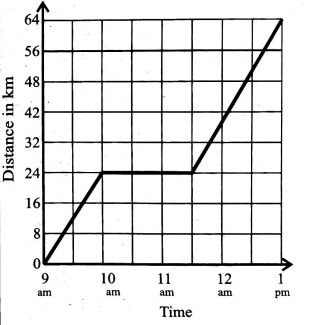
Calculate his average speed for the whole journey.- 64 km/h
- 8km/h
- 16km/h
- 12km/h
MARKING SCHEME
- B
- B
- A
- B
- B
- D
- D
- A
- C
- C
- C
- D
- C
- C
- C
- D
- C
- B
- C
- B
- A
- B
- B
- A
- B
- C
- B
- B
- D
- C
- C
- D
- A
- B
- D
- D
- C
- B
- A
- B
- B
- C
- A
- B
- B
- B
- D
- D
- A
- C


